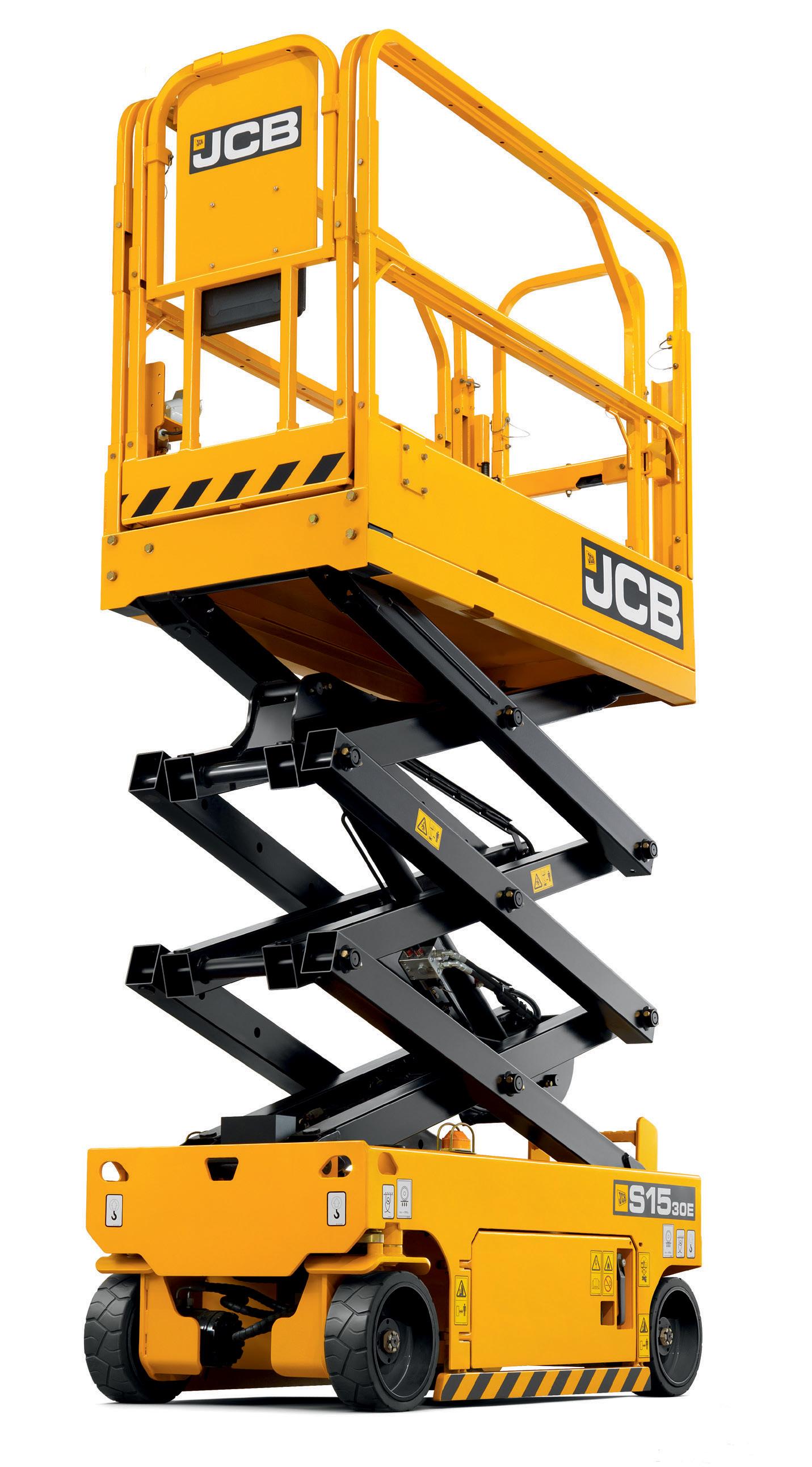PLUS CRANE REPORT THE CRANES TAKING MOBILISATION HIGHER BACK TO THE FRONT SPECIAL LOOK AT THE NEWEST BACKHOES
LISSMAC INTERVIEW

PLUS CRANE REPORT THE CRANES TAKING MOBILISATION HIGHER BACK TO THE FRONT SPECIAL LOOK AT THE NEWEST BACKHOES
LISSMAC INTERVIEW
CMME TALKS DELIVERING
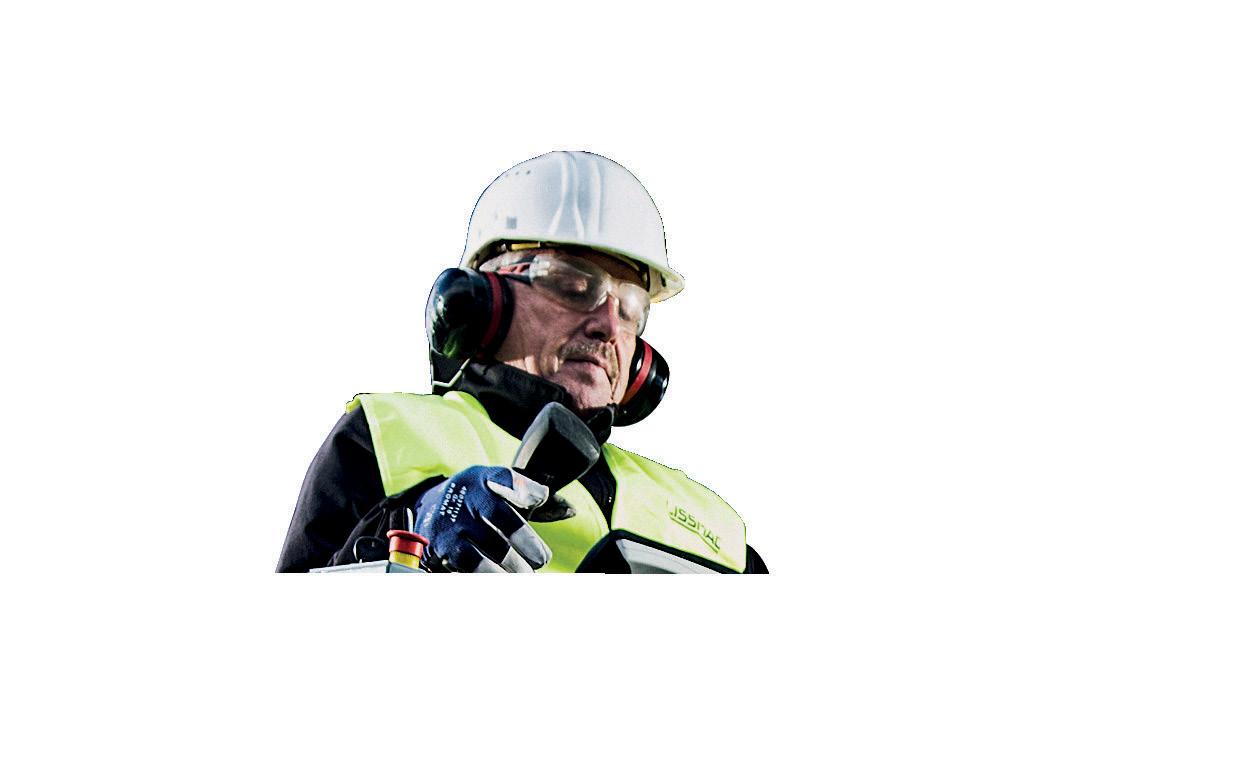
AND POWER WITH LISSMAC MASCHINENBAU

When it’s hard. When it’s painful. When it’s loud. TADANO Rough-terrain crane GR series has it covered. Demonstrating impressive robustness and high performance, our line-up from 13t to 145t rough-terrain cranes feature state-of-the-art technology to handle even the most demanding requirements. With efficient motors, the longest boom in its class (GR-1000EX-4), compact design and smart assistant systems, everything is on board for maximum success. The GR series: maximum flexibility for your success.

SEPTEMBER 2023
12_A CUT ABOVE AND BELOW
Lissmac talks to CMME about its bringing precision and power to the work-site.
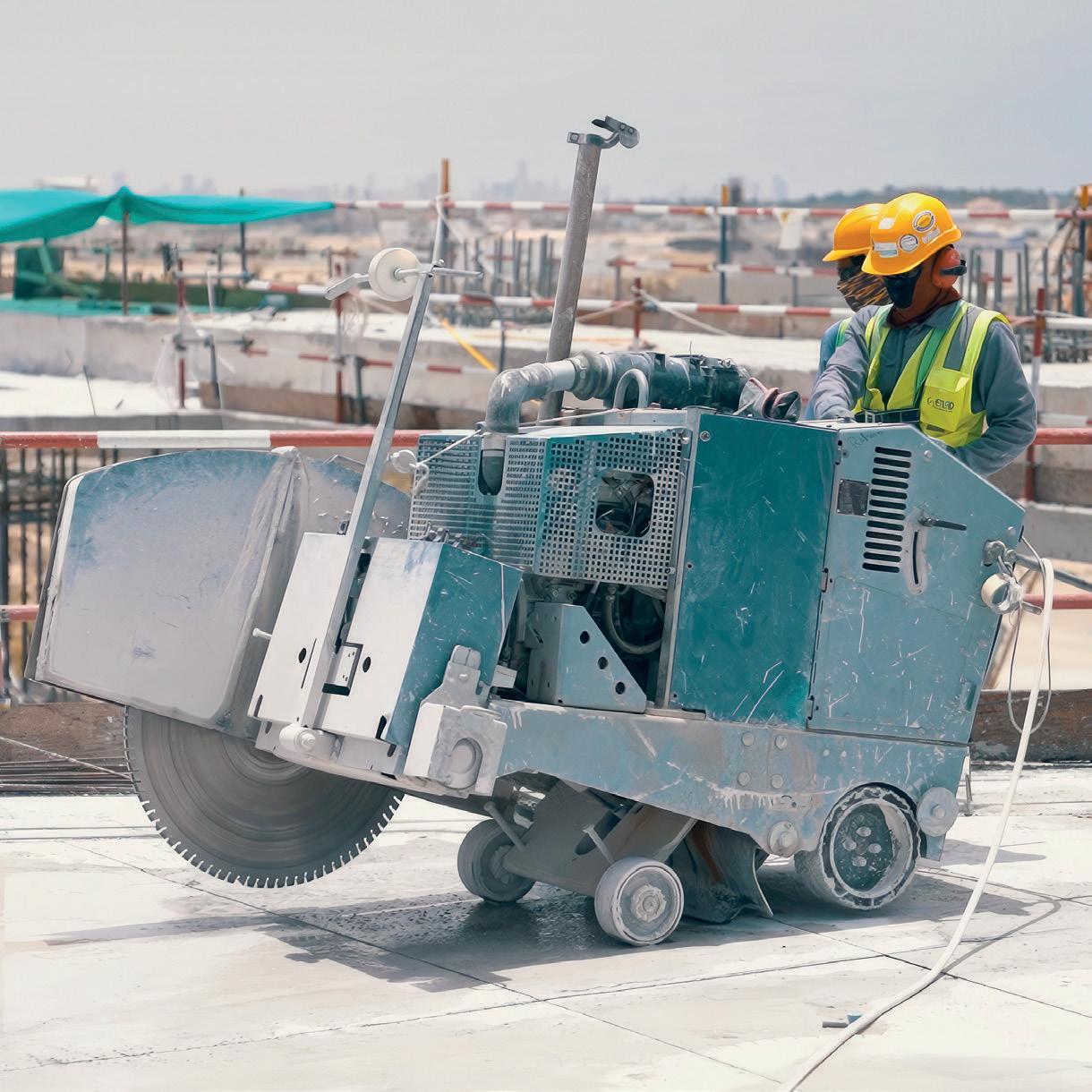

16_BACKHOE’S EVOLVE
CMME reviews the major advances in the backhoe design, including Bobcat’s new machine for the region.
19_CRANE REPORT 2023
A look at some of the biggest and tallest achievements in crane operatations in 2023.
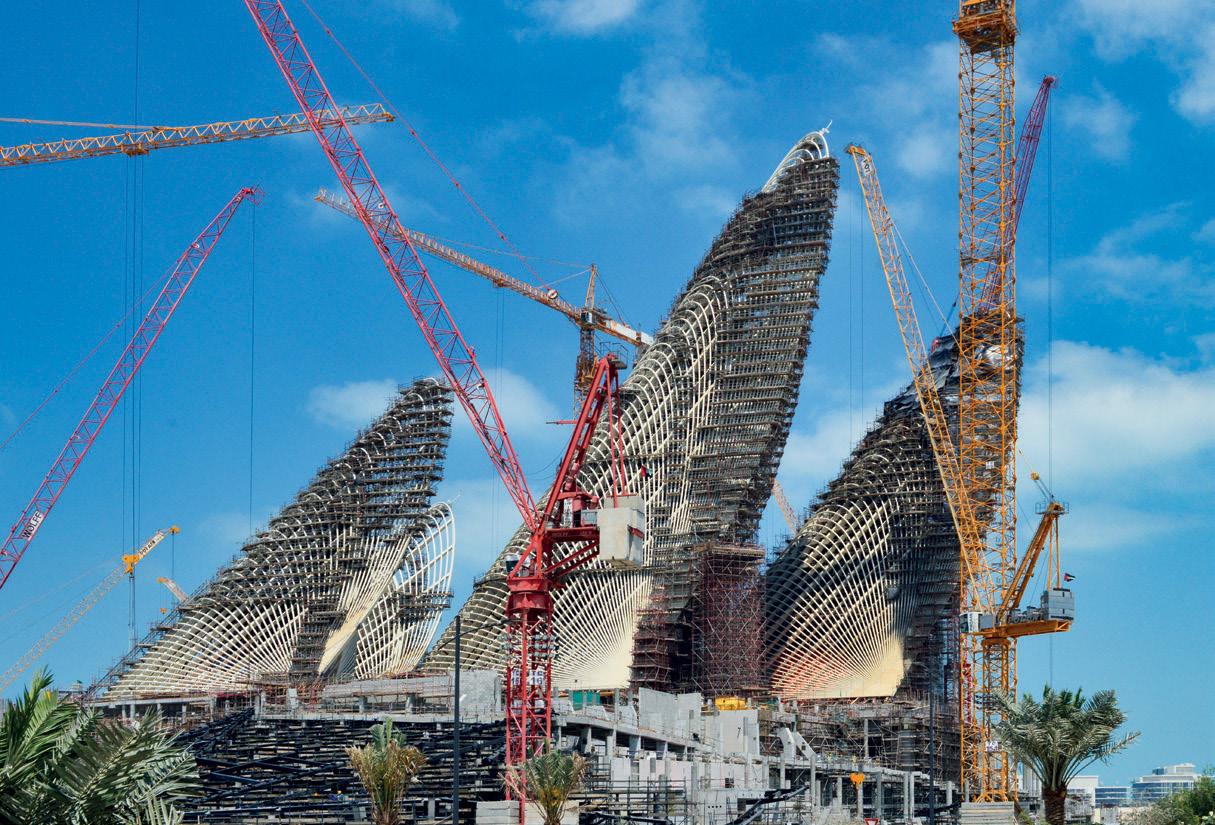
40_THE LAST WORD
The challenge of big lifts at seas.
32_NEW RELEASES
The latest releases from the world of construction machinery.
34_TOP TEN TIPS: BACKHOES
The best advice for doubling up your backhoe on-site.


36_OFF-HIGHWAY ANALYSIS
The challenge of designing off-highway trucks in an era driving towards electrification.
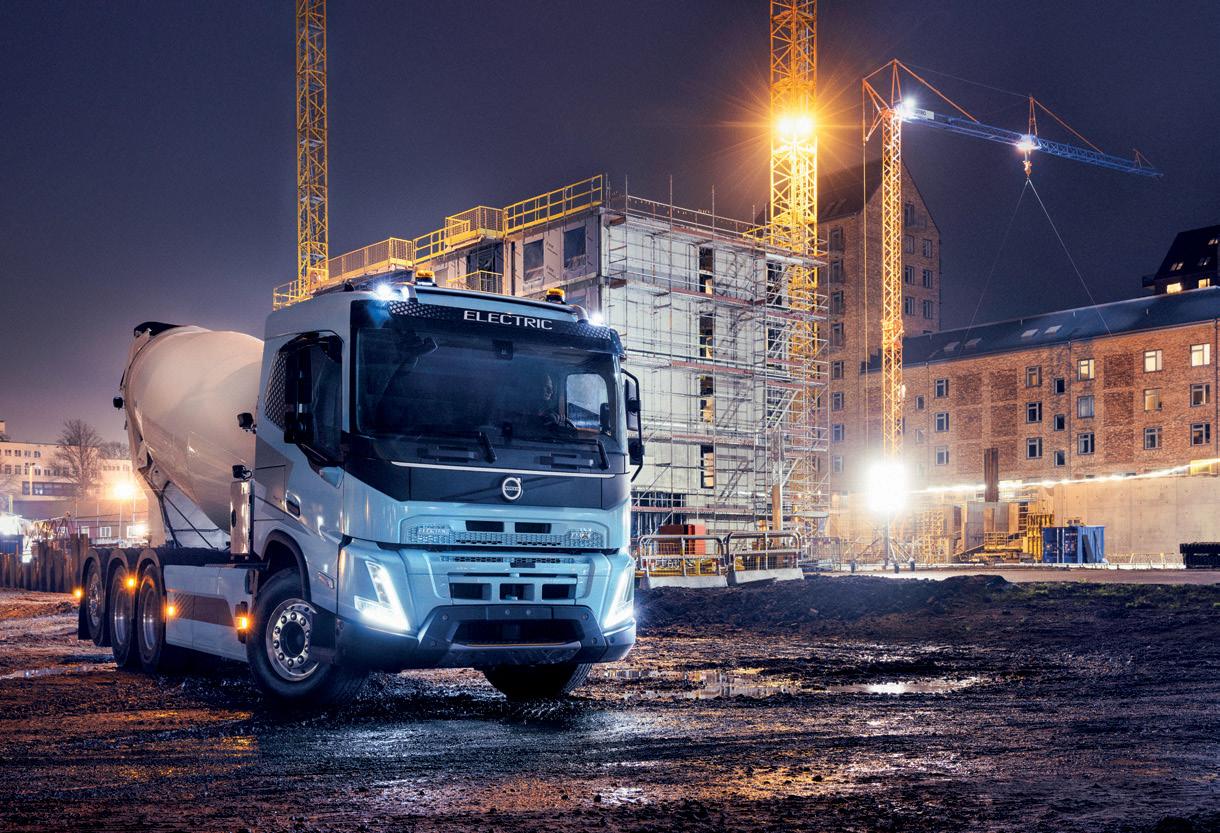
10 SPOTTED AC 4.080-1 ATC Sparrows Group takes on $13m crane job in Germany with Tadano’s newest ATC.
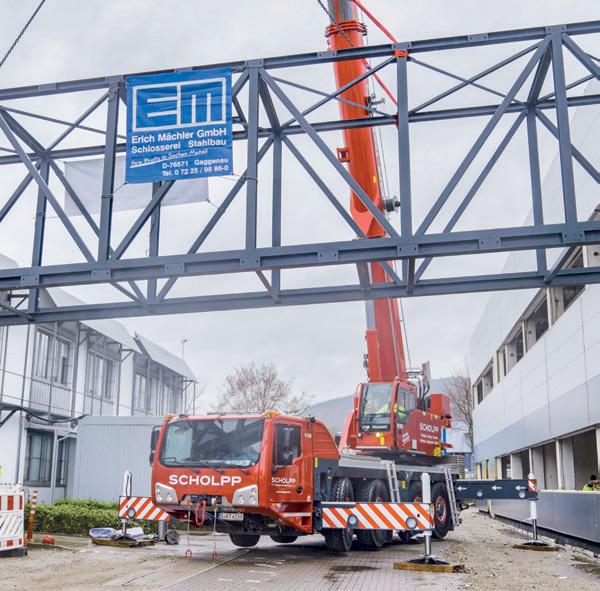
As many of you know I double up as the editor on our sister publication Truck & Fleet Middle East, and this month news that the UAE was going to enforce new rules on transporters was quickly causing a stir. In short, from the beginning of next year, transporters will only be allowed to run with truck GVWs that don’t exceed 65t.
The UAE is clearly recognising that it needs to preserve the roads it has invested so much into. It also reflects a change in the construction priorities of the country.
Overloading a trailer can significantly compromise its stability and handling characteristics. This can lead to accidents, particularly during turns, sudden stops, or adverse weather conditions. Overloaded trailers are more prone to tipping over, which poses a serious risk to both the driver and other road users.
For the transporters themselves, this will mean they must have to re-think the way they are running their fleets of trucks but it also should cause a re-think in the way the quarry and mining operations work in the country.
Changing trailer rules will have a significant impact on mining operations, as these rules often govern the transportation of materials, equipment, and resources to and from mining sites. The effects of such changes can be both positive and negative, and they depend on the specific regulations and how well they align with the needs of the mining industry.
Lowering load rules typically means reducing the maximum weight a trailer can carry. This can have a significant
impact on mining operations, as it may require more trips to transport the same amount of materials or equipment, resulting in increased transportation costs and potentially slower production.
With reduced payload capacity, mining companies may need to invest in more trailers or vehicles to maintain their production levels. This can lead to higher capital and operational costs. Longer transportation times due to reduced payload capacity can affect a mining operation’s production schedule. Delays in transporting materials or equipment to and from the mining site may disrupt workflow and output. Lower load rules can disrupt supply chain logistics for mining operations. Adjustments may be needed to accommodate the increased volume of transportation required to meet production demands.
Having said that there are some real upsides to the changes, such as lower wear and tear on vehicles and roads - and of course should lead to better and greener operations. Eventually.
The time of unlimited capacity is over –and unfortuntely, now is the time to face it, as financially painful as it will be.
GROUP
MANAGING DIRECTOR
RAZ ISLAM raz.islam@cpitrademedia.com
+971 4 375 5471
MANAGING PARTNER
VIJAYA CHERIAN vijaya.cherian@cpitrademedia.com
+971 4 375 5713
DIRECTOR OF FINANCE & BUSINESS OPERATIONS
SHIYAS KAREEM shiyas.kareem@cpitrademedia.com
+971 4 375 5474
PUBLISHING DIRECTOR ANDY PITOIS andy.pitois@cpitrademedia.com

+971 4 375 5473
EDITORIAL EDITOR
STEPHEN WHITE stephen.white@cpitrademedia.com
+44 7541 244 377
ADVERTISING
SALES MANAGER
BRIAN FERNANDES brian.fernandes@cpitrademedia.com
+971 4 375 5479
DESIGN

ART DIRECTOR SIMON COBON simon.cobon@cpitrademedia.com
DESIGNER PERCIVAL MANALAYSAY percival.manalaysay@cpitrademedia.com
MARKETING
EVENTS EXECUTIVE MINARA SALAKHI minara.s@cpitrademedia.com
+971 4 433 2856
CIRCULATION & PRODUCTION
DATA & PRODUCTION MANAGER PHINSON MATHEW GEORGE phinson.george@cpitrademedia.com
+971 4 375 5476
WEB DEVELOPMENT
ABDUL BAEIS
UMAIR KHAN
FOUNDER
DOMINIC DE SOUSA (1959-2015)
PUBLISHED BY
Stephen White Editor, CMMEAs the leader of the pack, you rely on high-performance equipment trusted by winners. When you’re faced with a challenge, you shift into high gear and sweep through the finish line.






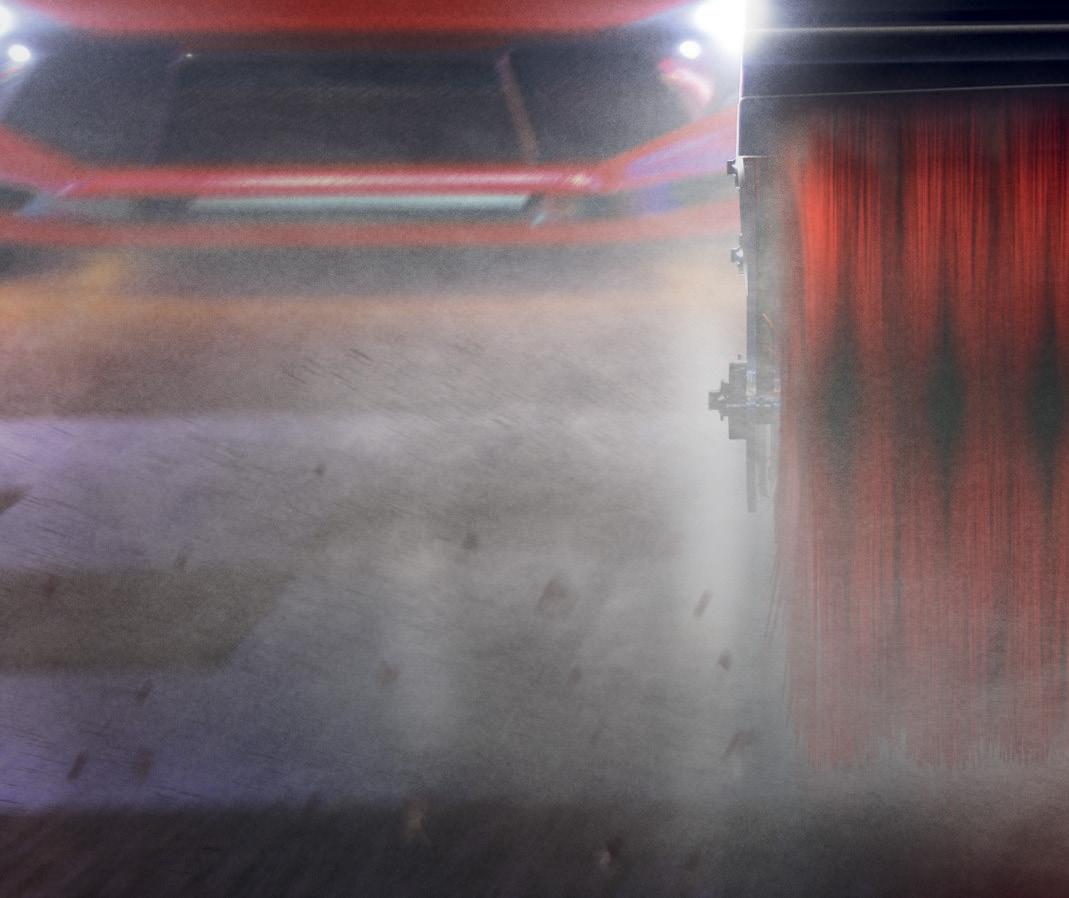

CONSTRUCTION
Lamprell wins major offshore project
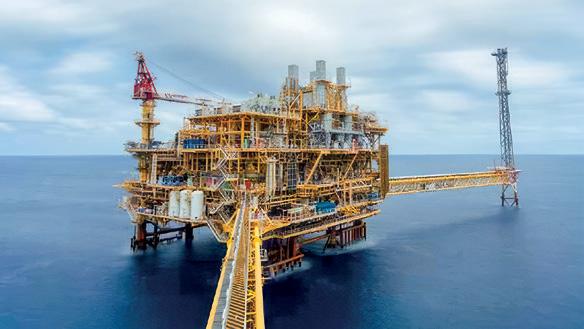
EVENT: GCC infrastructure to be put in the spotlight at new summit on 15 November



CONSTRUCTION
Designs for Equinox Resort


Amaala revealed
OPERATIONS
JLS Yachts will join Sindalah ecosystem
FEATURE: Getting serious about sustainability

PROPERTY
Samana Developers launches Samana Golf Views

EXPERTS: Shifting customer demands sparking transformation in real estate market
CONSTRUCTION
Tenders issued for Bahrain gas units

PROPERTY
Fujairah issues two new Property laws

Stakeholders will be given six months to align with legal requirements of property ownership rulings
INFRASTRUCTURE
World record bid submitted for Dubai desalination plant Acwa Power leads competitive tenders for DEWA’s Hassyan Phase 1 project
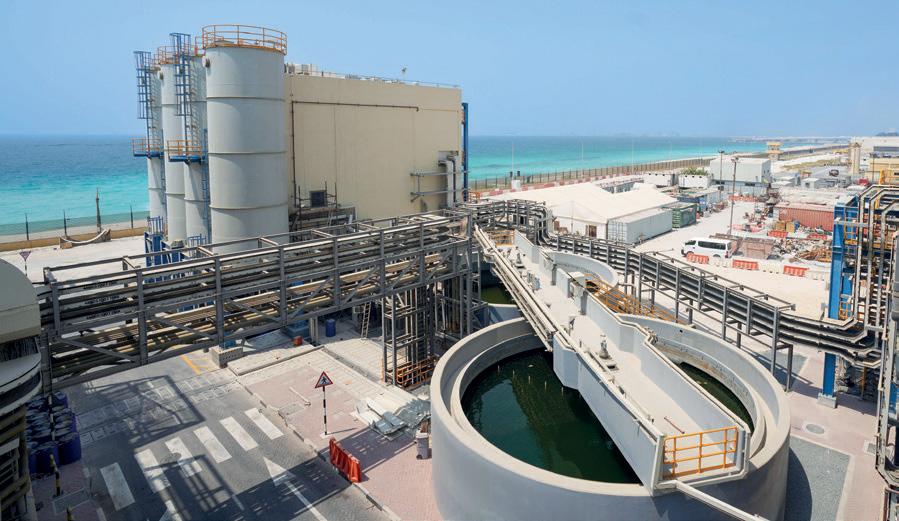
CONSTRUCTION
Parsons awarded five-year project and construction management contract to expand KAFD Firm developing commercial, hospitality, residential, municipal, mixed-use buildings and infrastructure for the Riyadh development
MACHINERY
Mammoet launches zero emissions option for SPMT transport

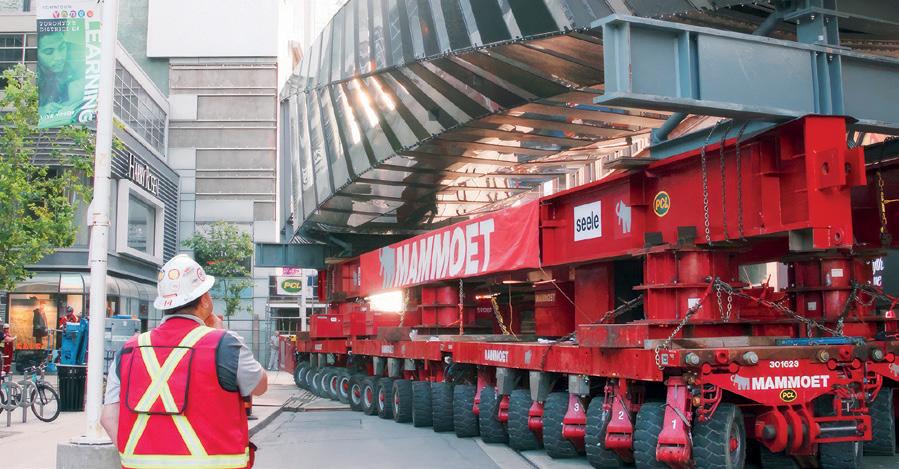
The new equipment works by converting existing SPMTs from diesel to electric power
SUSTAINABILITY
Adnoc and Tabreed to decarbonise cooling through use of geothermal energy
Currently, the cooling of structures accounts for the majority of the UAE’s electricity consumption
ENERGY
DEWA patents innovative energy storage liquid

CONSTRUCTION
Construction of world’s largest offshore wind farm commences

PROPERTY
Damac Coral Reef to use exclusive Faudemer designs


CONSTRUCTION
UAE-Oman Railway announces competitive tender

PROPERTY
Plans underway to accelerate Sharjah property sector

XCMG GROWTH
Middle East Crane Equipment Trading (MECET), the authorised Hitachi Machinery dealer for the United Arab Emirates, has celebrated the key handover of the first unit of the Hitachi ZW370-5A. Wim Aernouts, the managing director of MECET, accepted the delivery, marking a significant milestone in the region’s construction and heavy machinery industry.

The Hitachi ZW370-5A, boasting a bucket ISO heaped capacity of 5.0m³ with a 1.9 V-shape rock bucket (BOT, PIN TYPE), is suitable for construction and earthmoving projects across the UAE.
With an engine power of 300 kW (402 HP) and an operating weight ranging from 31,750 to 32,570 kg, this machine promises optimum performance and enhanced controllability for a wide range of applications.
MECET, known for its commitment to delivering top-quality construction
equipment, will now offer the powerful Hitachi ZW370-5A to its customers in the UAE.
As the UAE continues to invest in infrastructure and development projects, the introduction of the Hitachi ZW3705A through MECET is expected to play a pivotal role in the country’s growth, bringing enhanced efficiency and productivity to the construction sector.
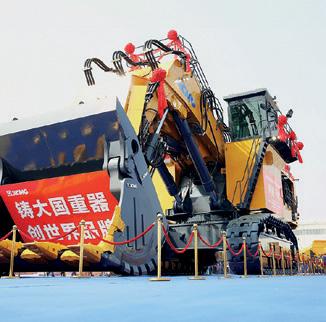
MECET is a member of the Luyckx group. The company has its head office in Abu Dhabi and operates from Dubai. Our own offices, warehouses and a fully equipped workshop allow us to provide maximum support to customers in the UAE.
The company holds all necessary licenses to work locally for construction companies, the oil and gas industry and also for dredging companies specialised in the construction of artificial islands.
XCMG has unveiled its results for the first half of 2023, showcasing a remarkable performance marked by substantial growth in both overall and overseas sales revenue. XCMG’s total sales revenue for H1 2023 reached an impressive US$6.98 billion, while overseas revenue recorded a remarkable 33% year-onyear surge.
XCMG has been actively expanding its global footprint, establishing sales companies in strategic locations such as Great Britain, Singapore, Saudi Arabia, United Arab Emirates, and Vietnam. The company is also investing in new production bases, R&D facilities, and spare parts centres.
Terex Advance has signed a Letter of Intent (LOI) to integrate Cummins’ X15H hydrogen internal combustion engines into its Terex Advance Commander Series. It is a range of front-discharge concrete mixer trucks designed for off-road use.
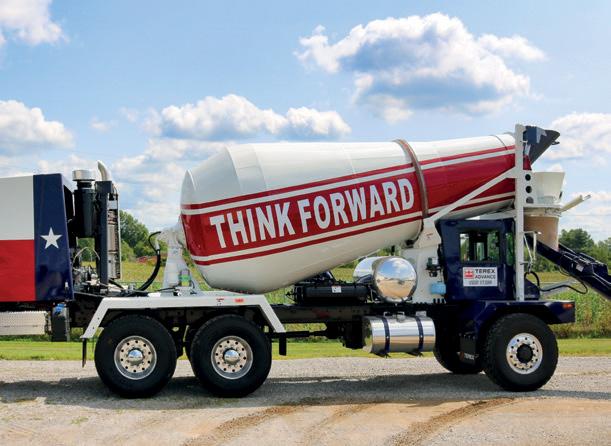
“The global need to reduce emissions becomes stronger, we are actively pursuing practical, cost-effective strategies to help our ready-mix customers decarbonize. Cummins’ X15H is a feasible zerocarbon option for our renowned front-discharge mixer trucks, and we are eagerly anticipating the future deployment of this technology,” said David Grabner, general manager, Terex Advance.
Currently powered by Cummins diesel engines, the Terex Advance Commander Series will include a zero-carbon hydrogen fuel option when series production of Cummins’ X15H engines begins later this decade.
“Hydrogen internal combustion engines provide a viable zerocarbon fuel option for heavy-duty, high-performance applications like concrete mixer trucks, which are often subject to arduous dutycycles and tough terrain. It is exciting to see OEMs like Terex Advance leading the way in zero-carbon technologies, particularly in complex sectors like vocational trucking,” said Jim Nebergall, General Manager, Cummins Hydrogen Engine Business.
Part of Cummins’ industry-first fuel agnostic platform, the X15H is based on familiar internal combustion engine technology. Integration into the truck chassis is straightforward and does not require major overhaul of vehicle designs or business operations. Significant commonality between the X15H and Cummins’ existing diesel platforms facilitates scale advantages in parts procurement and supports existing maintenance practices.
– WE LOOK AROUND
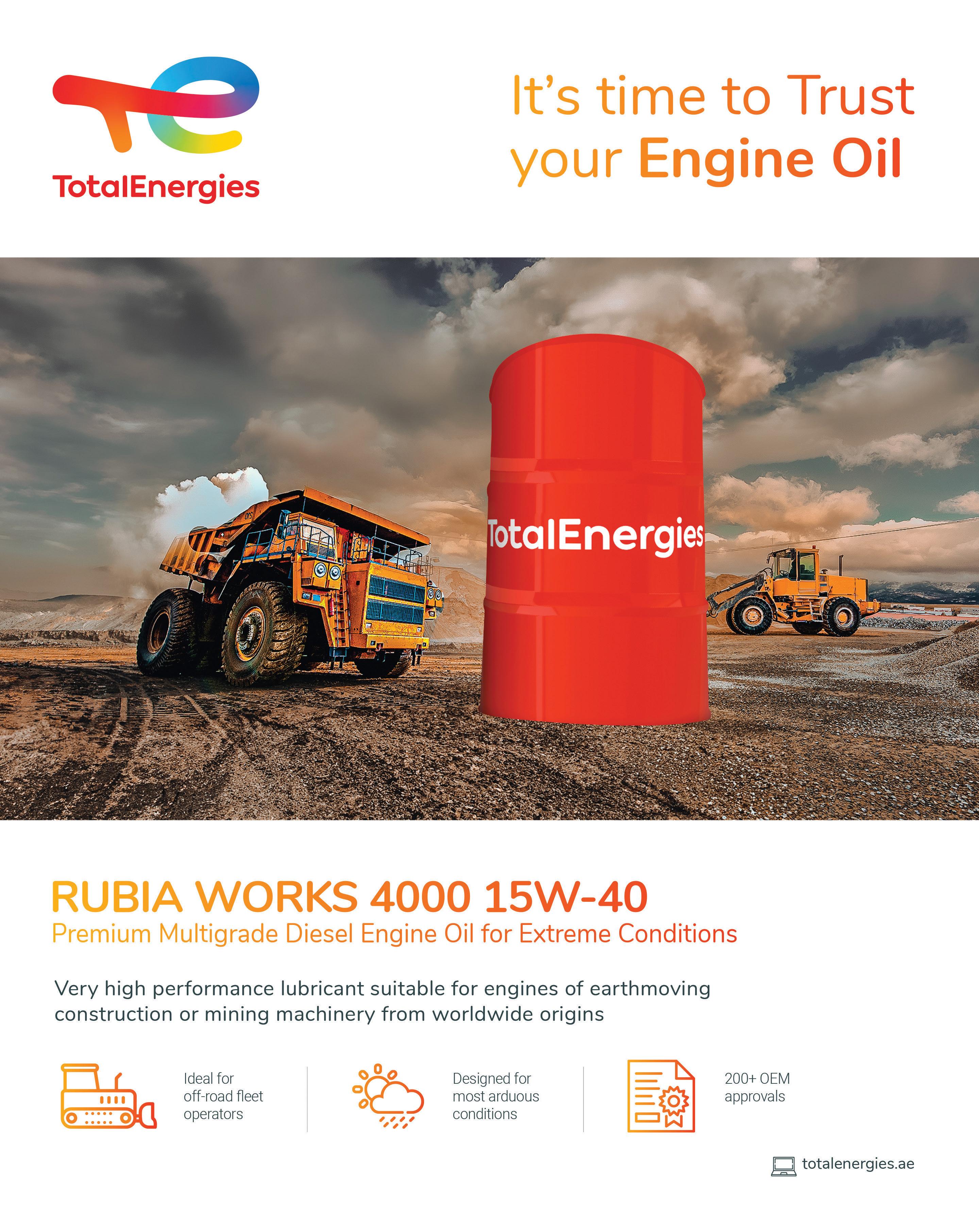
The UAE will ban heavy vehicles weighing over 65 tonnes from driving on its roads, effective from the beginning of next year, 2024. In a significant move aimed at preserving the country’s advanced infrastructure and bolstering road safety the announcement comes as part of a federal law regulating vehicle weights approved by the UAE Cabinet.
His Highness
Sheikh
Mohammed bin Rashid Al Maktoum, Vice-President and Prime Minister of the UAE and Ruler of Dubai, expressed the rationale behind this pivotal
decision. He emphasised that the primary objective of the ban is to protect and maintain the UAE’s state-ofthe-art road infrastructure while enhancing overall road safety for residents and visitors alike.
One of the key features accompanying this regulatory change is the implementation of a sophisticated smart electronic gate system. This system will be responsible for measuring and continuously monitoring the weights and dimensions of heavy vehicles passing through designated checkpoints. It
is expected to ensure strict compliance with the new weight restrictions and swiftly identify any violations. The ban on heavy vehicles weighing over 65t reflects the UAE’s commitment to sustainable infrastructure and efficient transportation systems. By reducing the strain on the country’s roads caused by exceptionally heavy vehicles, it aims to extend the lifespan of the road network and minimise maintenance costs.


Transport companies and truck operators are encouraged to assess their fleets and operations to ensure compliance with the new regulations. The smart electronic gate system represents a technologically advanced and efficient means of enforcing the weight restrictions. Its implementation demonstrates the UAE’s commitment to harnessing cutting-edge technology to enhance road safety and infrastructure management. The ban is set to come into effect in 2023.
Hoffmann Green Cement Technologies, a leading industrial player dedicated to decarbonising the construction sector through clinker-free cements, has announced a significant milestone in its global expansion efforts. The company has inked a 22-year exclusive licensing agreement with the Shurfah Group, a prominent Saudi conglomerate, to establish multiple Hoffmann Green cement production units in Saudi Arabia. This strategic collaboration aims to advance the decarbonisation of the construction sector within the region. The 22-year licensing agreement provides the Shurfah Group with exclusive rights to leverage Hoffmann Green’s pioneering clinker-free cement technologies and replicate a first-of-its-kind plant based on the H2 vertical model. Shurfah owns a portfolio of over 13,800 housing units and investments exceeding 6 billion Saudi riyals, will be responsible for financing, building, and operating Hoffmann Green production units.

As offshore wind turbines continue to increase in size, the foundations supporting them are also growing, posing challenges for transport and storage. Mammoet has introduced a new jacking and cradle system aimed at mitigating these challenges, ultimately helping customers cut costs. These colossal cylindrical steel foundations, known as monopiles, play a crucial role in connecting wind turbines to the seabed. With weights exceeding 3,000 tonnes and lengths surpassing 120 meters, their dimensions are steadily expanding. Mammoet’s system provides an additional 60cm of stroke compared to standard SPMT systems. This extension allows customers to continue using their existing support structures as monopiles continue to grow in size.
Dingli Middle East Trading, a fully owned subsidiary of Zhejiang Dingli Machinery Co., LTD, is making waves in the Middle East construction equipment market with its impressive growth trajectory and innovative product offerings.
Established in the United Arab Emirates (UAE) in 2021, Dingli Middle East Trading has experienced remarkable growth throughout 2022 and year-to-date in 2023. This expansion has not only allowed the company to increase its workforce but also bolstered its presence in the region, delivering top-tier sales and technical support services to its clients.
One key driver of Dingli’s success has been its commitment to innovation. In recent years, the company has introduced a range of groundbreaking products, including the BT36, BT41, and BT44 Telescopic Boom lifts. Notably, these new models come in both Diesel and Hybrid variants, catering to a wide range of customer preferences. The reception for these innovative
offerings has been overwhelmingly positive, highlighting the company’s ability to meet market demands.
In the pipeline for Dingli is the manufacturing of the articulated models BA36, BA41, and BA44, which is scheduled to commence towards the end of the fourth quarter of 2023. These models are expected to further enhance Dingli’s competitive edge in the industry.
One standout feature of Dingli’s boom lifts is their design, which allows them to fit into standard shipping containers.

Moreover, these lifts are equipped with a patented leg extending
system that effectively prevents tire scrubbing, a common issue that can lead to severe tire damage. This design innovation underscores Dingli’s commitment to providing durable and efficient equipment to its customers.
As part of its strategic growth plan, Dingli is currently in the process of establishing a subsidiary in the Kingdom of Saudi Arabia (KSA).
The company also has ambitious plans to open multiple branches in the KSA, offering a comprehensive range of new machine sales and fast-moving spare parts.
Additionally, these branches

The Oman and Etihad Rail Company, the developer and operator of the railway network connecting Oman and UAE, has invited prequalification bids for freight facilities, depots and stations linking the two GCC states. An ambitious project, the UAE-Oman Railway Network aims to facilitate passenger and freight movement, create rewarding job opportunities for professionals in both countries, and foster sustainable development and stronger ties through the development and operation of a safe, secure, and efficient railway network connecting the two Gulf nations.
The 303km Oman-UAE railway
network will extend from Sohar Port to the UAE National Rail Network, linking Oman with Abu Dhabi. As per the tender document, potential contractors must demonstrate
individually - or as a joint venture/ consortium - that they have the necessary resources and expertise to meet the following requirements.
The bidders must be a local
will provide on-the-ground technical support to ensure that Dingli customers in the region receive exceptional aftersales service and support.
Dingli Middle East Trading’s impressive success story in the Middle East construction equipment market reflects its dedication to innovation, customer satisfaction, and a strong commitment to expanding its regional presence. With an exciting lineup of new products and a growing network of support services, Dingli is poised for continued growth and success in the coming years.
company - or a JV/consortium led by a local company - registered in the UAE or Oman, as applicable, to deliver the package(s) in the relevant country. They must have recent experience executing projects of a similar size, or nature (rail freight facilities, rail passenger stations, and rail maintenance depots, etc.) in a railway environment.
Bidders must also have a reputation for timely completion, quality work and design and build experience. The prequalification documents were available for purchase and downloading through an e-Payment Services Gateway until the end of August.
The crane service provider Scholpp and the steel fabrication firm Erich Mächler GmbH are a wellcoordinated team, having worked together since 1984. In their time, they’ve mastered many a challenging project – like the recent lift of a steel pedestrian bridge in Bad Rotenfels.
But this time the team had a new member: the brand-new Tadano AC 4.080-1 all terrain crane. Scholpp had only recently acquired the machine, complete with all the bells and whistles.
Prior to the lift, the Scholpp and Mächler employees involved in the project jointly inspected the construction site and saw right away that it was going to be a tight fit. “That’s why, for this job, we opted for our new AC 4.080-1. With its compact dimensions and its stepless
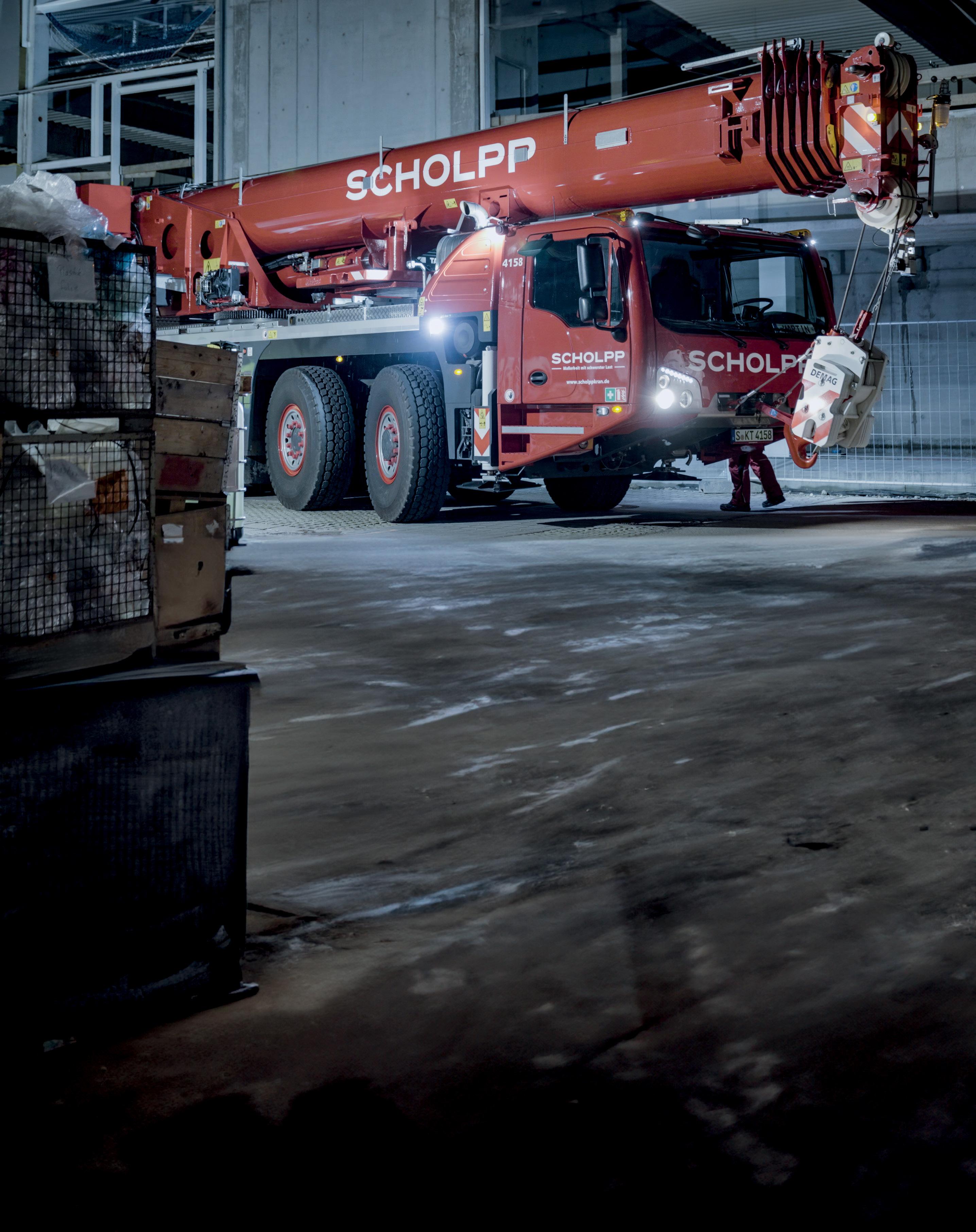
Flex Base outrigger system, it was the right choice for the on-site conditions,” says Scholpp field team member Kai Schwarz.
The crane professionals from Stuttgart were already more than happy with this crane. “For us, this machine is the gold standard for all four-axle cranes on the market today. It’s compact, it’s equipped with IC-1 Plus and 360° Surround View cameras, it features a boom length of 60 meters, and then there’s the optional boom head camera system,” Jan Meißner, Scholpp’s regional manager for the RhineNeckar region, says, reeling off the highlights of the AC 4.080-1. In fact, the people at Scholpp were so happy with the machine, they ordered another three right away, taking the Tadano contingent of their fleet to a total of 19 cranes. For the experts at Scholpp, Tadano cranes just can’t
be beaten on performance, quality, and reliability.
Consequently, they were expecting great things of their new AC 4.080-1 on its outing in Bad Rotenfels. And they were not disappointed. Scholpp transported the 5-tonne, 16.5-meter-long, 2.3-meter-wide and 3-meterhigh steel pedestrian bridge from the Mächler GmbH fabrication works to the construction site, using its own truck. Once at the construction site, it was time for the AC 4.080-1 to shine. “We configured it as a taxi crane, with a partial counterweight of 9.3 tonnes,” explains crane operator Martin Zimmermann. “That was enough for this job because the Flex Base outrigger system meant that the
AC 4.080-1 didn’t require any more counterweight, despite the heavy 5-tonne load.”
60M
Total boom length
In other words, for this lift, the Flex Base system allowed Scholpp to spare itself the expense of using an additional transport vehicle for the crane. For the lift itself, the team had to limit the slewing radius because of an obstructing container and adjacent buildings. After that, everything was ready, and it was time for the lift.
“In a textbook lift, our crane operator used the AC 4.080-1 to hoist the bridge safely and accurately into position on his first attempt,” explains Jan Meißner. He speaks for the whole team when he says the AC 4.080-1 was absolutely the right crane for the job.
Town
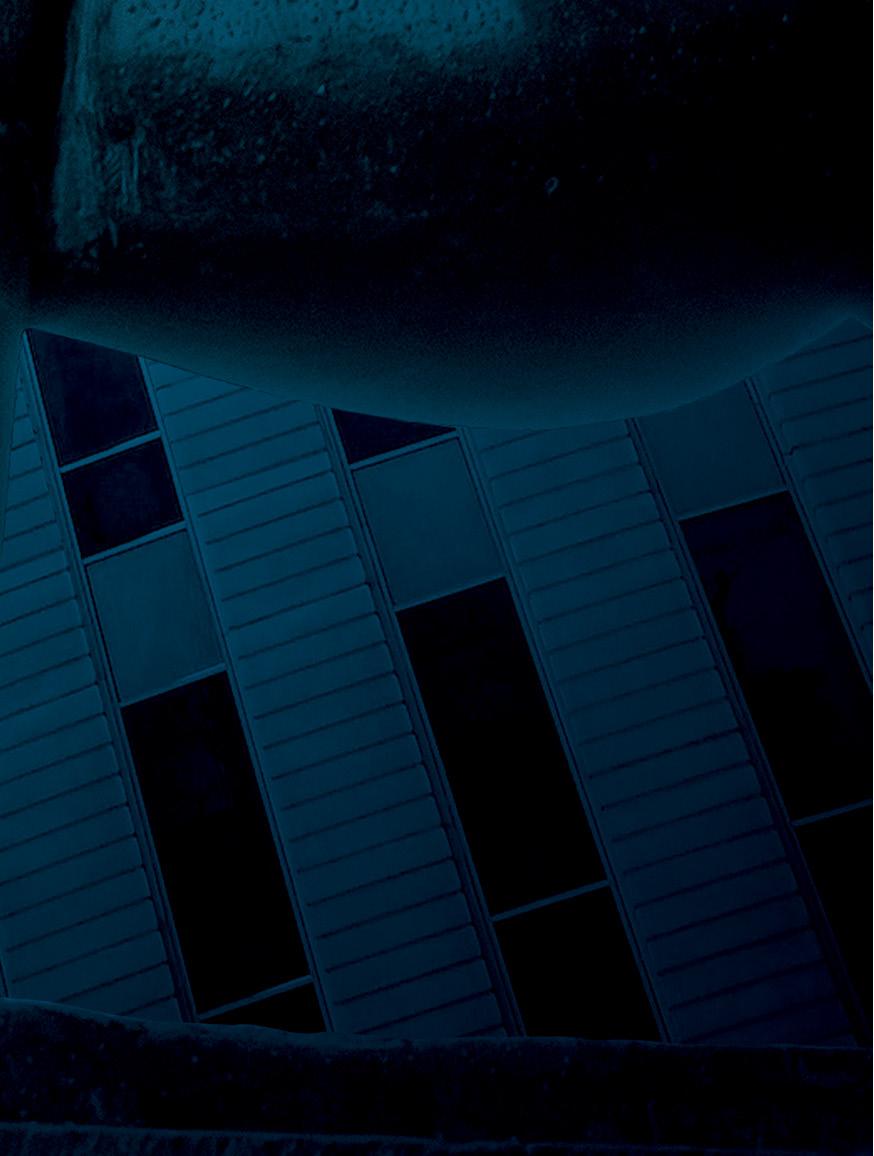


We are independent, smart, cosmopolitan and courageous - just like the Bremen Town Musicians. In 2023, the TO Group will celebrate its 10th anniversary. You will not pay for all the experience we have gained over the past decade - but you will certainly benefit from it. We implement transport and logistics solutions worldwide that are perfectly tailored to your requirements. The advantages of working with TO Group are many: local presence, international experience, personal advice and commitment.








At the end of 2022, we were named the best-performing Northern European agent for Bahri Line. And

The demand for more powerful and precise machinery is evergrowing. At the core of every construction machine lies its engine—a marvel of engineering that blends power and precision.
The more precise your work results on the construction site, the more convincing the overall result will end up being. This is why the construction professionals at LISSMAC invest all of their knowhow in making innovative professional products for the construction industry even better
In the world of construction and concrete cutting, precision and power are paramount. When it comes to slicing through tough materials like concrete, asphalt, and masonry, the right equipment can make all the difference. In this article, we introduce you to the cutting-edge floor saw machines that are setting new standards in the industry with their unparalleled power and precision.

Floor saw machines have long been the
workhorses of construction sites, tasked with cutting through the toughest of materials with ease. However, the demand for more power to enhance efficiency and productivity has led to a new generation of floor saw machines. With over 44 years of producing machines Lissmac has deployed its Diamond Tools to engineer machines in a way that get the maximum output from the engine directly to the shaft that’s driving the diamond tools, and thus keep a very high torque
Johnson Pereira, regional manager, Lissmac Maschinenbau says choosing the right Diamond tools is the key for a successful cutting job. He also tells CMME that while power is important Lissmac’s range of floor saws, masonary saws, wall saws, and coring machines don’t just offer raw strength; they also provide the finesse and precision where they are most needed.
Could you tell us about Lissmac and its focus on providing powerful and precise construction machinery?
Certainly. Lissmac Maschinenbau is dedicated to
delivering innovative professional products for the construction industry, with a strong emphasis on power and precision. In today’s construction world, achieving precise results on-site is crucial to the overall success of a project. We understand this well, and for over 44 years, we’ve been committed to creating machinery that not only offers raw power but also the finesse needed for accurate cuts.
What sets Lissmac’s floor saw machines apart in terms of power and precision?
Our floor saw machines, along with our Masonry Saw, Wall Saw, and Coring Machines, are designed to provide unmatched power and precision. We’ve learned that the key to this lies in optimizing the relationship between machine power and the diamond tools used. By engineering our machines to deliver maximum output directly to the tool shaft, we maintain high torque, ensuring successful cutting jobs. It’s important to highlight that choosing the right diamond tools is equally critical for achieving precision.
How does Lissmac prioritize operator comfort and safety in the design of its machinery?
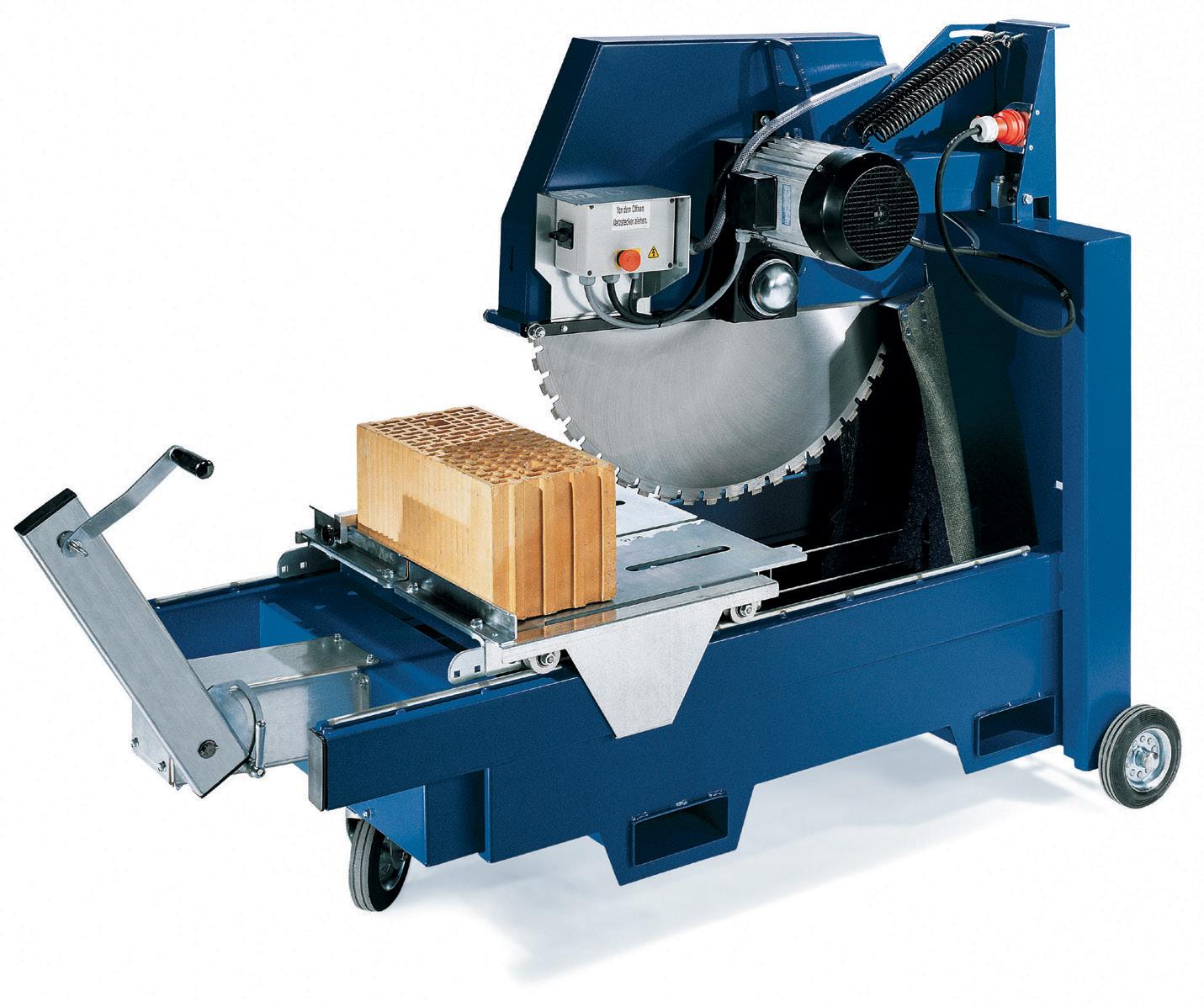
Operator comfort and safety are paramount in our machine designs. We recognize that operators spend long hours working with our equipment, and minimizing fatigue and maximizing comfort is crucial. Our machines are built with a focus on reducing vibrations, achieved through balanced frames and the selection of low-vibration engines, such as EU stage 5 Engines. Additionally, we provide user-friendly and rugged control systems on our Multicut and Unicut range machines, ensuring they withstand the harsh conditions of construction sites.
Could you elaborate on the safety features incorporated into Lissmac’s machines?

Safety is a top priority. One of our critical safety features is the blade guard, which strikes a balance between safety and visibility. This ensures operators can maintain precision while staying protected during cutting tasks. We believe that safe operation is
not just about the well-being of the operator but also about safeguarding others working in the vicinity.
Can you share some notable projects where Lissmac machinery has made a significant impact?
Certainly. We’ve had the privilege of working on various projects in the Middle East region. For instance, we’ve supported precision joint cutting
for international airports—a challenging task due to the region’s extreme heat. Our machines, with their precise power, enable us to induce joints within a tight timeframe. We’ve also been involved in controlled demolition works, providing both machinery and on-site support to our partner contractors. Additionally, our Masonry saws, known for their unique free-hanging motor design, have been praised by contractors for their productivity and low maintenance.


What can we expect from Lissmac in the future?
We’re constantly pushing the boundaries of innovation. While we already hold the title of the largest floor saw range globally and have the most powerful floor saw, the Unicut 610, we believe there’s more to be done.
Different construction sites have specific needs, and we want to cater to them. That’s why we’re introducing new models, such as the 12 HP and 18 HP in our compact cut range machines. We’re also excited about our sensor-driven Multicut range machine with a 55 HP engine, capable of sensing steel inside concrete while cutting and adjusting its settings automatically. These prototypes have been in testing and are set to launch by the first quarter of 2024. We’re committed to setting new standards in the construction machinery industry.
“In today’s construction world, achieving precise results on-site is crucial to the overall success of a project”Compactcut 601 E - one of the first High Frequency Driven Electric Machine for power while indoor cutting. DTS 1000 with its free hanging motor technology directly on the drive end with no Belts.

The construction industry has seen a remarkable transformation in recent years, with a growing emphasis on sustainability and environmental responsibility. In this era of innovation and green technology, JCB (J.C. Bamford Excavators Ltd), a renowned name in construction equipment, has taken a significant leap forward by introducing a groundbreaking development: the JCB HydrogenPowered Backhoe. This cutting-edge machine represents a bold step toward reducing emissions and paving the way for a more sustainable future in construction.
As concerns about climate change and environmental impact continue to grow, industries worldwide are seeking more sustainable practices and technologies. Construction, being a major contributor to carbon emissions, has become a focal point for change. Traditional construction equipment, often powered by diesel engines, are known for their significant carbon footprint. It’s in this context that JCB’s innovative approach with the
hydrogen-powered backhoe emerges as a gamechanger. Hydrogen has long been recognised as a clean and efficient energy source. When used in fuel cells, it produces electricity with water vapor as the only byproduct, making it an ideal candidate for reducing emissions in various sectors, including transportation and construction.
The JCB Hydrogen-Powered Backhoe showcases the company’s commitment to innovation and sustainability. This remarkable machine leverages hydrogen fuel cell technology to provide a powerful and efficient alternative to traditional backhoes.
The most notable advantage of this backhoe is its zero-emission operation. Unlike diesel-powered counterparts, it doesn’t release harmful pollutants into the environment, contributing to cleaner air and a healthier planet. Don’t be fooled by its eco-friendly credentials; the JCB Hydrogen-Powered Backhoe doesn’t compromise on performance. It offers the same level of power and capability as its diesel counterparts, ensuring that construction projects can continue without any productivity sacrifices.
Hydrogen refueling is rapid and comparable to refilling a diesel tank, making it convenient for operators to maintain uptime on the job site. JCB
is investing £100 million in a project to produce super-efficient hydrogen engines and has already showcased working prototypes of a backhoe loader and Loadall telescopic handler powered by hydrogen. The mobile hydrogen refueller, providing a quick and easy way for customers to refuel their machines on site. Around 97% of construction machines have fuel delivered to them while working on site. This means customers are already used to a transportable fuel, allowing refuelling to take place in a matter of minutes. The hydrogen refuelling concept is a pet project of JCB Chairman Lord Bamford, who is leading JCB’s the development: “Since we became the first construction equipment company to unveil machines powered by hydrogen, many have asked how they can be refuelled. Well we have an answer with our new mobile hydrogen refuelling system, which allows hydrogen to be taken from on-site tube trailers and distributed to machines by our refueller as they work on the job site. This is no different to today when diesel is taken in bowsers to refuel machines.”
Last month Lord Bamford talked about using India, where it is reportedly looking for local hydrogen producers, as a hub for its hydrogen-powered machinery.
“We make 200 engines in India everyday. If we are making hydrogen engines commercially, we would be making them in India as well.” He added that it was difficult to put a timeline to it as the biggest obstacle to making hydrogen engines on a mass scale was sourcing the hydrogen itself.
1-in-2 machines sold in India are made in a JCB factory with its highest selling product being the backhoe loader. JCB’s Chief Innovation Officer Tim Burnhope with a hydrogen powered machinery says he expects some development to take place for commercial production of its engines in the UK in the next 12-18 months while it is likely to showcase the product later this year in India - JCB sells one in two construction equipment machinery in India and its highest selling product in India is the backhoe loader.
One of the benefits of hydrogen fuel cells is their quiet operation. This backhoe operates with reduced noise levels, creating a more pleasant and less disruptive work environment. With fewer moving parts and a simpler design compared to traditional engines, hydrogen fuel cells require less maintenance, resulting in lower operating costs. As technology continues to advance, we can expect to see more environmentally friendly solutions emerge across the industry. The hydrogen-powered backhoe is not just a piece of machinery; it symbolises a shift in perspective, demonstrating that construction can be both efficient and eco-conscious.
In the realm of construction equipment, innovation has become synonymous with progress and increasingly Case Construction Equipment (CASE),. Like JCB, Case is heavily invested into the Indian manufacturing sector and is also becoming a trailblazing name in the industry, making headlines with its groundbreaking foray into electric
construction machinery. Being the first to produce an electric backhoe loader represents a significant milestone for CASE, and in a recent interview, Andrea Calo, the company’s spokesperson, shed light on the remarkable journey from the first electric model’s unveiling in 2018 to the present day.

For CASE, innovation is not a new concept. With a history dating back to 1957, when they were among the pioneers of the iconic backhoe loader, the company has always pushed the boundaries of what’s possible in construction equipment. The decision to transition to electric models, however, presented unique challenges.
The journey towards electrification was no small feat, given the inherent complexity of the backhoe loader, a versatile machine that serves both front loader and backhoe applications. According to Calo, “It’s quite a complicated machine, but we have taken

the challenge and succeeded.” The launch of the electric backhoe loader marked only the first step in CASE’s ambitious journey towards electrification. Since the unveiling of their first electric backhoe loader in 2018, CASE has made impressive progress in the realm of electrification. At ConExpo in Las Vegas earlier this year, they showcased not just the electric backhoe loader but also unveiled two mini excavators, compact loaders, and a small articulated loader – all part of their electric product lineup. Notably, these are not mere prototypes; they are already in the market and in standard production. Development is complete, marking a significant leap forward in CASE’s commitment to sustainable construction equipment.
CASE understands that innovation is a collective effort, and it’s not just about drivelines; it’s also about digitalisation. To bolster their journey towards electrification, CASE has actively sought expertise from brands it has acquired. Calo explains, “We cannot win the evolution or the innovation game alone. So the company is heavily investing in acquiring expertise which were not part of our family. It’s a big effort from our company. There is a lot of investment, but if you want to be committed in the industry, that’s the only way. There’s no alternative to investment, and that’s what we’re doing.”
Not all innovative ideas find their way to market, but they still contribute to a company’s growth. CASE’s experience is no exception. Calo reflects on an example from 2019 when they introduced a revolutionary wheeled loader powered by methane. However, they didn’t bring it to market due to spatial constraints.

“There are good ideas which don’t always see the light of implantation for good reason,” he notes. Innovation means learning from both successes and challenges, using those experiences to guide future product innovations.
In conclusion, CASE’s journey into electrification is a testament to their commitment to sustainability and innovation. As they continue to pioneer electric construction machinery, they are shaping the future of the industry, one electrifying innovation at a time.
“Our new mobile hydrogen refuelling system allows hydrogen to be taken from on-site tube trailers and distributed to machines as they work on the job site”The hydrogen refuelling concept is a pet project of JCB Chairman Lord Bamford, who is leading JCB’s the development.
Bobcat has been a leading manufacturer of cuttingedge compact construction equipment, but it has unveiled its latest addition to the lineup, the B730 M-Series Backhoe Loader, a meticulously designed to cater to the Middle East and Africa (MEA) and Commonwealth of Independent States (CIS) regions. This robust machine embodies high performance, user-friendliness, and unparalleled comfort while upholding Bobcat’s renowned reputation for durability through its proven, top-quality components, as stated by the manufacturer.
Manufactured at the state-of-the-art Doosan Bobcat facility in Chennai, India, the B730 M-Series joins the esteemed Bobcat backhoe loader family, serving as a model designed specifically for the value market. This versatile machine offers multiple configurations and compatibility with a wide range of attachments, making it an ideal choice for a myriad of applications, including construction,
rental, roadworks, demolition, excavation, landscaping, and more.
John Chattaway, Loaders Product Manager at Bobcat, emphasised the collaborative effort that went into crafting a machine tailored to the requirements of mixed contractor and rental fleets. He stated, “The B730 M-Series embodies 100% Bobcat DNA, boasting our hallmark attributes – top-tier manufacturing quality, reliability, an extensive warranty, and the assurance of Bobcat’s well-established service and parts network in the MEA and CIS regions.”
The B730 M-Series places a strong emphasis on durability in demanding environments, incorporating renowned, industry-leading components known for their reliability and ease of service and maintenance in the field. These components are sourced from trusted brands, including the Perkins 1104 engine, Carraro axles and transmission, and Parker pumps, ensuring superior dependability and effortless serviceability.
According to the firm, the introduction of the B730 M-Series Backhoe Loader underscores Bobcat’s commitment to delivering innovative, efficient, and reliable construction equipment tailored to the unique needs of the MEA and CIS

regions. With its advanced features and focus on operator comfort, durability, and efficiency, the B730 M-Series is poised to make a significant impact in the construction industry.
Gaby Rhayem, Regional Director for the Middle East, Africa, and CIS countries at Doosan Bobcat EMEA, highlighted the machine’s standout features, including class-leading breakout forces, reach, dig depth capabilities, and multi-function backhoe operation. Coupled with a robust hydraulic system, intuitive controls, and exceptional productivity for trenching, leveling, and loading tasks, this machine is poised to make a significant impact in target regions.
Powered by a well-proven 94 HP Perkins High Torque engine, coupled with the hydraulic Tandem Gear Pump and Synchro Shuttle (SPS) transmission, the B730 M-Series delivers outstanding productivity and fuel efficiency. This machine also boasts classleading backhoe breakout forces, along with the highest loader lift and push breakout in its category. With backhoe digging depths of up to 4.63 meters (standard arm), it’s suitable for a wide range of job sites.
The B730 M-Series prioritises operator comfort, offering a spacious cab, intelligent layout, and
comfortable seating to ensure efficiency during long shifts. Exceptional 360° visibility from the cab and intuitive controls make every job easier. The large rear window enhances visibility for backhoe work and can be easily repositioned or secured in the cab ceiling. Fully opening side windows and door catches for added ventilation further contribute to operator comfort.
High-performance aluminum coolers and a robust Multi-Wing cooling fan guarantee efficient cooling, ensuring optimal performance even in extreme conditions. The B730 M-Series boasts an extra-large 160-liter fuel tank and impressive fuel efficiency, providing extended work hours without the need for frequent refueling. The fuel tank’s corrosionresistant plastic construction, fortified with metal guards, enhances its ruggedness.
The forward-flipping hood design sets an industry benchmark by providing easy access to critical components, fluids, and filters, simplifying daily maintenance and part replacements. Careful attention to hose routing and protection, including a distribution hose box for the backhoe side-shift, ensures durability. A standard toolkit is included to facilitate daily maintenance tasks.
All Bobcat backhoe loaders come with a standard two-year warranty, a testament to the reliability, durability of components, and overall design, offering added protection and peace of mind to customers.

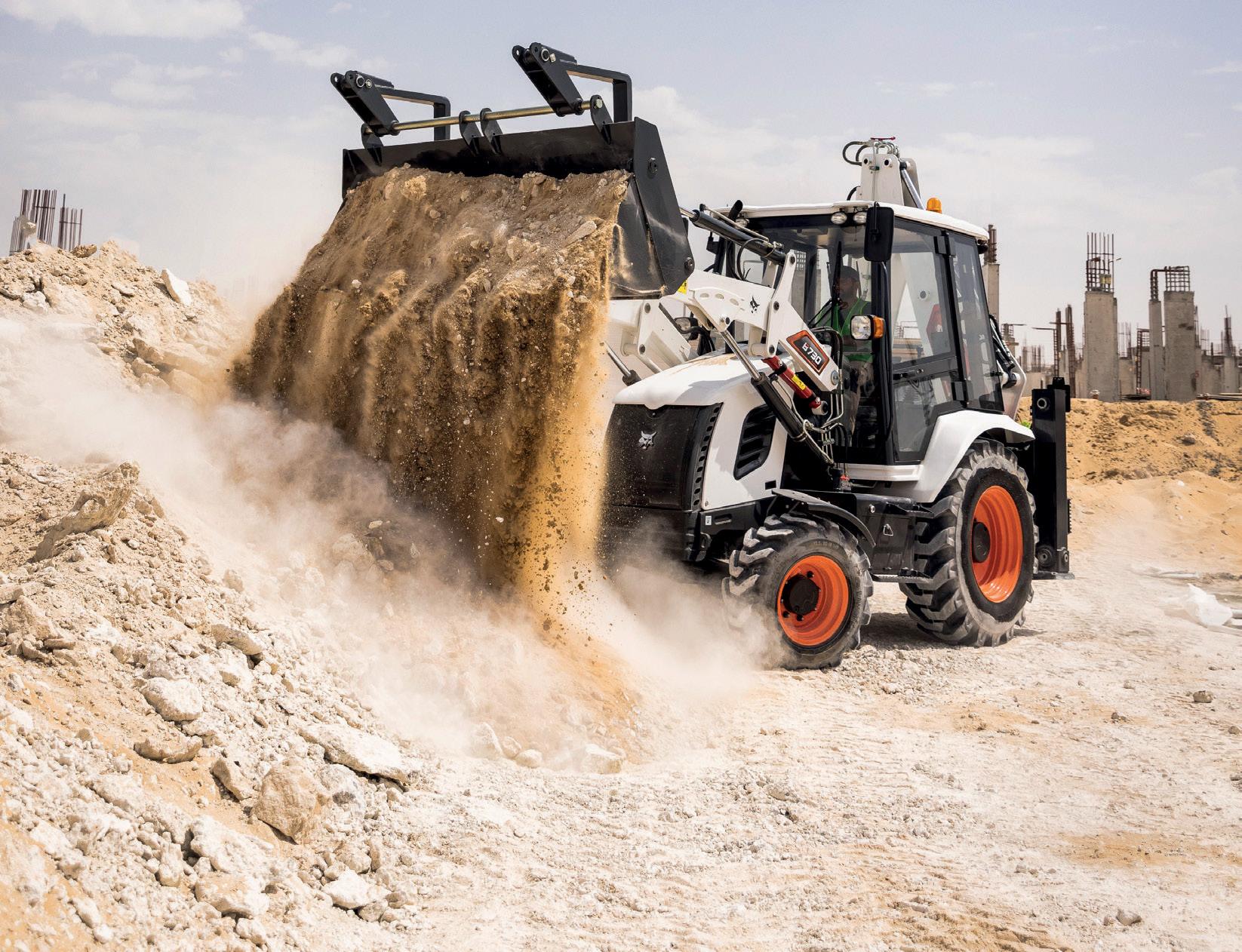

In 2019, Doosan Bobcat made a significant announcement that marked a pivotal moment in its global operations. The company inaugurated its maiden manufacturing facility in India, situated on a sprawling 21.6-acre expanse on the outskirts of Chennai, Tamil Nadu. This state-of-the-art facility boasts an impressive annual production capacity of 8,000 units, and it has rapidly become a critical part of Doosan Bobcat’s growth strategy.
This integrated facility encompasses various crucial aspects of production, including fabrication, warehousing, assembly, and a state-of-the-art paint shop, all housed under one roof. The facility’s journey commenced with the ambitious goal of manufacturing Bobcat backhoe loaders, a product line entirely conceptualized and developed by the Chennai-based engineering team.
Scott Park, CEO of Doosan Bobcat Global, highlighted the strategic importance of this facility during its opening, stating, “This new facility will help to meet the increasing demand for backhoe loaders to support the development of India’s infrastructure and construction segment. India is one of the key markets for Doosan Bobcat to maintain global leadership in the compact segment of the market. By opening the new factory in India, Doosan Bobcat has taken the next step forward to expanding its global presence and growth strategy. This facility represents our long-term commitment to Indian customers, employees, and business associates in the nation through the development
of vendors, promotion of local parts procurement, technology transfer, and export.”
Doosan Bobcat is not just setting up shop in India; it has grand ambitions for the facility’s future. The company said at its opening that it as aiming to secure the No. 3 position in the highly competitive Indian backhoe loader market within a span of three years, leveraging the production capabilities in Chennai. Moreover, the company envisioned the facility evolving into a global manufacturing hub for exports and is now clearly making good on that promise.
Beyond backhoe loaders, Doosan Bobcat is looking to expand its production portfolio to include other compact products tailored to meet the unique needs of the Indian market. This strategic diversification aligns with the company’s commitment to providing comprehensive
solutions and maintaining its status as a leader in the industry.
Doosan Bobcat’s foray into India is more than just establishing a manufacturing facility; it’s a testament to the company’s long-term vision for growth, innovation, and global expansion. As the Indian construction and infrastructure sector continues to thrive, Doosan Bobcat’s presence promises to play a pivotal role in meeting the evolving demands of the market.
With a commitment to local development, technology transfer, and export capabilities, Doosan Bobcat’s Chennai facility is poised to make a lasting impact not only on the Indian construction landscape but also on the company’s global footprint. It represents a beacon of progress and opportunity in the world of construction equipment manufacturing.
“The B730 M-Series embodies 100% Bobcat DNA, boasting our hallmark attributes”



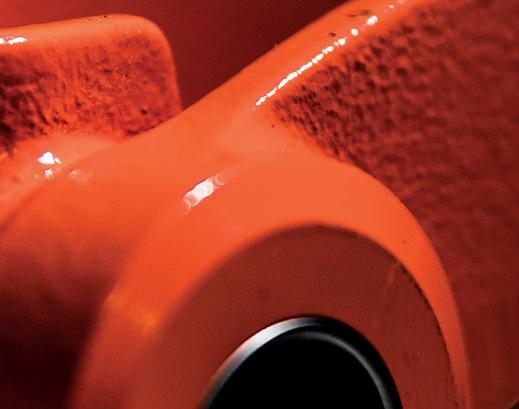























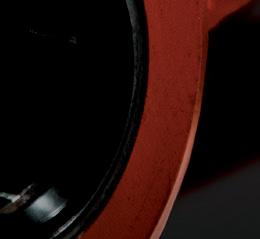

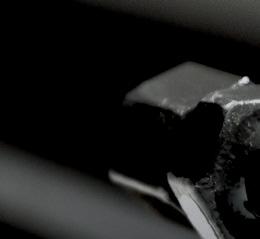
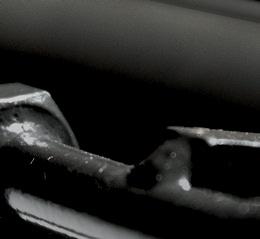




















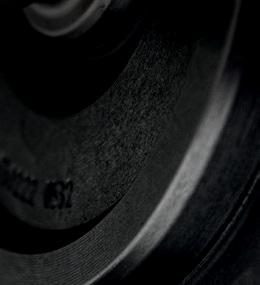



















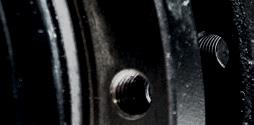











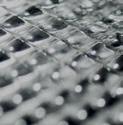














































PLUS RAIMONDI’S RISE




KBW’S CRANE EXPERT’S 2023 PROGRESS REPORT




A FEAT OF STRENGTH
TADANO TAKES ON 500T SHIP LIFT
MARKET ANALYSIS





READY FOR A LIFT
CMME-COMMISSIONED REPORT TAKES A LOOK AT THE GLOBAL CRANE MARKET













The tower crane market refers to the industry involved in the manufacturing, sales, and rental of tower cranes. Tower cranes are large, powerful cranes that are used primarily in the construction industry for lifting and moving heavy materials and equipment. They are commonly seen on construction sites and are essential for the construction of high-rise buildings, bridges, and other large structures. The demand for tower cranes is closely tied to the growth of the construction industry. As construction activities increase, the need for tower cranes to handle heavy lifting tasks also rises. Increasing focus on the development and management of shipping ports will accelerate the use of tower cranes. Freight and cargo services have witnessed a dramatic rise over the last decade. A surge in global trade activities has increased the reliance on larger and more advanced vessels for cargo transportation.
Tower cranes play a crucial role in the loading and unloading of containers, equipment, and raw materials from these vessels. To address affordability concerns associated with tower cranes, many companies are introducing rental services for construction projects. These models are gaining momentum as they help avoid initial investment costs as well as offer fewer maintenance requirements, no depreciation cost, and reduced repair costs. Additional benefits of these rental service include time-saving capabilities in applications
such as transportation, on-site setup, and transportation.
As the global construction sector continues to thrive, the demand for tower cranes is expected to grow multifold over the coming years. The consistent rise in global population and accelerating rate of urbanization across both developed and developing economies have escalated the need for new residential and commercial spaces. According to the latest UNCTAD estimates, nearly 57% of the world population was living in cities in 2021. The share is generally higher in the developed regions, with people living in urban areas accounting for about 79.5% of the population. On the other hand, in developing and LDC economies, the share stood at around 51.8% and 35.3%, respectively.
The fast-paced migration of people toward urban regions has propelled publicprivate investments in the construction sector, resulting in the vertical expansion of the existing skyline. With the current trend expected to witness an upward trajectory, the global tower crane market will grow commendably in the foreseeable future. Towering machines demonstrate exceptional lifting capabilities, stability, and versatility, thus, playing a vital role in highrise building projects and are indispensable for constructing tall structures.
construction projects shaping the tower crane market outlook?
The buildings and construction sector is among the major contributors to GHG and CO2 emissions and climate change. According to the U.S. Energy Administration (EIA), both residential and commercial buildings utilize

Governments worldwide are investing in urban infrastructure development, including transportation systems, public facilities, and smart cities.


close to 40% of the nation’s total energy supply, contributing 30% to greenhouse gas emissions. The alarming statistics associated with energy consumption and environmental impact depict that the gap between the actual climate performance of the sector and the decarbonization pathway is widening.
To illustrate, despite a significant increase in investment and global progress in reducing the energy intensity of buildings, the sector’s overall energy consumption and CO2 emissions rose in 2021 compared to pre-pandemic levels, according to the 2022 Buildings-GSR. The energy demand for buildings grew by almost 4% from 2020 to 135 EJ, the highest rise in the previous ten years. Building activities’ CO2 emissions have risen to a record high of over 10 GtCO2 up about 5% from 2020 and 2% from the previous peak in 2019.
These unsettling facts have encouraged governments and policymakers globally to employ low-emission, energy-efficient technologies to mitigate the crisis. To that end, in April 2023, the leading organisation Credai joined forces with the Indian Green Building Council on Saturday to help its members create approved council dwellings that are environmentally sustainable. In the next two years, the apex body has committed to developing 1,000 green-certified projects and 4,000 projects by 2030. The increasing focus on sustainable practices and green construction will positively influence the tower crane market.

In addition, tower crane manufacturers worldwide have been ramping up efforts to develop tower cranes equipped with ecofriendly features, such as energy-efficient motors and regenerative braking systems.
Additionally, the use of renewable energy sources, such as solar power, for crane operations reduces carbon emissions and aligns with the adoption of environmentally friendly tower cranes, fostering market growth.
Technological breakthroughs
To improve crane operations and enhance efficiency and safety, manufacturers are integrating advanced features such as telematics, IoT connectivity, and automation capabilities in construction equipment such as tower cranes. Telematics enables realtime monitoring of crane performance and maintenance requirements, optimizing productivity. Furthermore, the implementation of intelligent control systems and anti-collision devices enhances safety at construction sites. These
To address affordability concerns associated with tower cranes, many companies are introducing rental services for construction projects.
innovations have revolutionized the tower crane industry, making the equipment more streamlined, productive, and safer.
In addition, the consistent rollouts of new and innovative products with improved features and capabilities are expected to transform the market dynamics in the years to come.
For instance, in May 2023, Chinese manufacturer Zoomlion unveiled its new R2000-720 tower crane, which has a 720-ton capacity, 20,000 tonne-meter rated torque, and is 1,312-foot high, claiming it to be the world’s largest tower crane. The R2000-720 has addressed several worldwide issues for ultra-large tower cranes that operate in highly challenging working circumstances, such as strong wind, high humidity, and heavy load, by making advances and breakthroughs in structure, weight balancing, intelligent control, and other technologies.
Infrastructure investments redefine market dynamics
Governments worldwide are also investing in urban infrastructure development, including transportation systems, public facilities, and smart cities. For instance, the Bipartisan Infrastructure Law passed by the U.S. Government in November 2021 has planned to allot USD 550 billion over FY 2022-2026 in new Federal investment in infrastructure, including bridges, roads and mass transit, resilience, water infrastructure, and broadband.
Tower cranes are essential for constructing large-scale infrastructure projects such as bridges, tunnels, and metro stations. The increasing number of infrastructure initiatives provides significant growth opportunities for the tower crane market.
Besides, the increasing participation of private players in the infrastructure has also opened new growth avenues for the tower crane industry by fueling the demand for robust and versatile cranes capable of handling complex infrastructure projects.
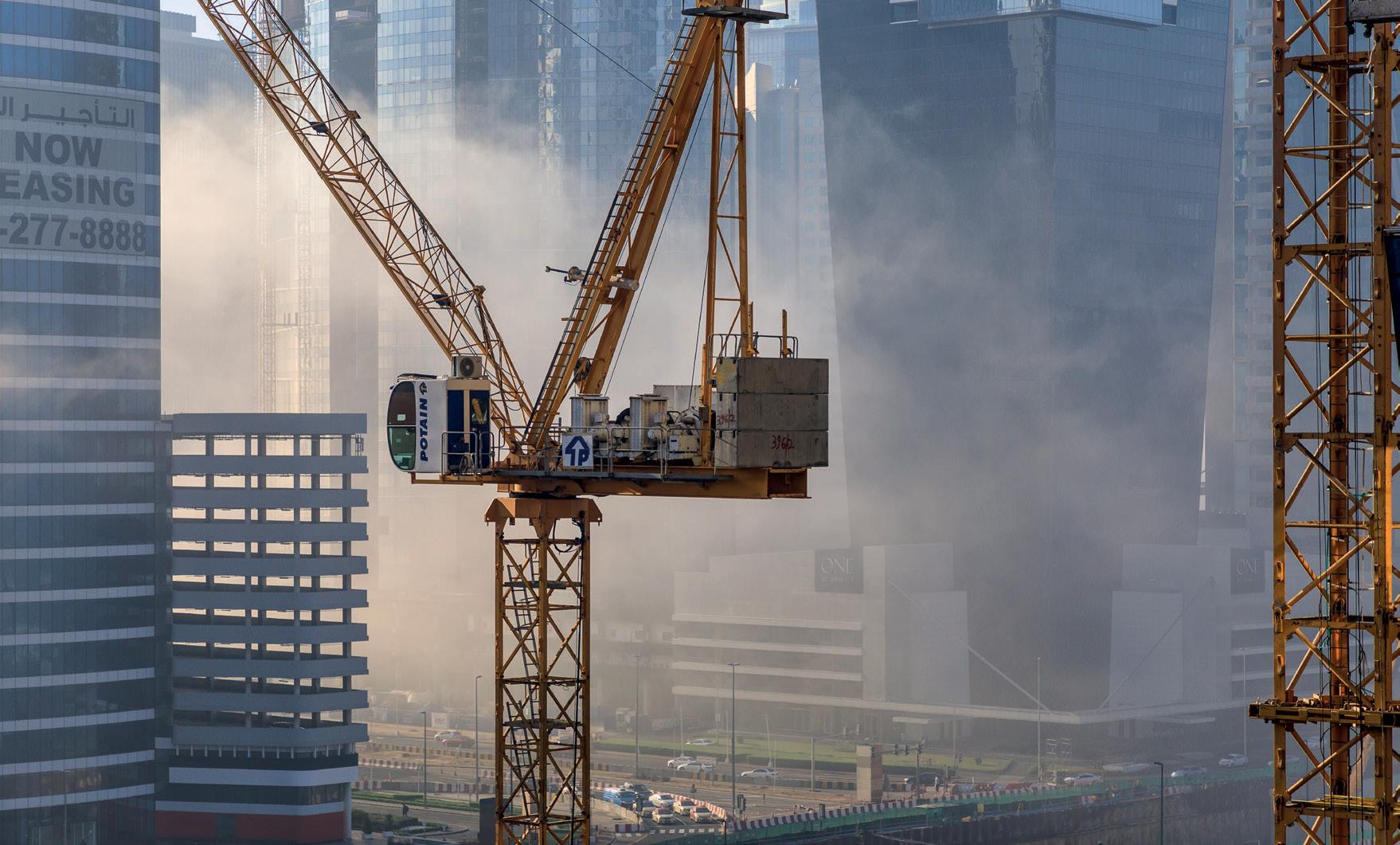
According to World Bank data, pledges for private infrastructure investment (PPI) were recorded at USD 91.7 billion over 263 projects, an increase of 23% from 2021.
Conclusion
The tower crane market is experiencing a robust expansion owing to the escalating demand for high-rise buildings, technological advancements, sustainable practices, and infrastructure development. As the construction industry continues to soar globally, the need for efficient, safe, and eco-friendly tower cranes will persist, driving the market forward.
Kanoo Cranes offers engineered solutions for any lifting requirements with knowledgeable experts engaged in the field of lifting with Mobile cranes,Crawler cranes, Tower cranes and passenger hoists with a combined experience of more than 50 years and we continue to retain an excellent reputation alliance agreements with:

• JASO
• SMIE-Anti collision
• MEADA
• SPIERINGS
• ALBA
Our Focus is to provide engineered crane solutions to the Construction, Oil and Gas and Industrial markets.



KANOO CRANES L.L.C


P.O.Box: 290, Dubai, United Arab Emirates
info@kanoocranes.com www.kanoocranes.com
T: +971 4 446 5532 F: +971 4 446 5538
 JASO
ALBA
MEADA
SMIE
JASO
ALBA
MEADA
SMIE
Raimondi’s journey began nearly 160 years ago, and throughout its illustrious history, it has consistently delivered excellence in crane manufacturing. The brand is synonymous with quality, durability, and cutting-edge engineering. Over the decades, Raimondi cranes have been an integral part of iconic skylines worldwide.
As sustainability takes center stage in the construction industry, Raimondi Cranes is meeting this challenge head-on. In 2023, the company is proud to offer an extensive range of electric and hybrid cranes. These eco-conscious cranes are designed not only for power and efficiency but also with a commitment to reducing environmental impact. The transition to electric and hybrid models aligns perfectly with the construction industry’s growing emphasis on green practices. By choosing Raimondi’s sustainable crane solutions, projects can significantly reduce their carbon footprint, contributing to a
more eco-friendly future. Raimondi’s reach extends far beyond its Italian roots. In 2023, the company boasts a global presence, strategically positioning itself in key construction markets worldwide. This expansion allows Raimondi to provide localized support and tailored crane solutions to meet the unique demands of diverse projects.
From the bustling cities of Asia to the iconic skylines of Europe and the ambitious projects in the Middle East, Raimondi cranes are a common sight. This global perspective enables Raimondi to adapt to the varied challenges posed by different construction endeavours, from towering skyscrapers to intricate infrastructure projects.
2023 marks a significant turning point for Raimondi Cranes in terms of technological innovation. The company has harnessed the power of digital technology to elevate crane performance, safety, and efficiency to unprecedented levels.
Raimondi’s smart crane technology incorporates advanced sensors and real-time monitoring systems. These features provide operators with critical data for precise control, leading to enhanced safety and optimal job site productivity. The integration of
cutting-edge technology ensures that Raimondi cranes remain at the forefront of innovation in the construction industry. In 2023, the company’s cranes are gracing the construction sites of some of the most exciting and ambitious projects worldwide.

The Vida Residences Aljada project is part of the Emirate’s largest mixed-use destination, and it is set to become a prominent addition to the skyline. What makes this venture even more remarkable is the partnership between two of the UAE’s master developers – Arada and Emaar Hospitality. These four branded buildings within the Vida Aljada complex mark the beginning of an exciting collaboration, and Raimondi Middle East is proud to play a pivotal role in its construction.
Wael Hasan, Commercial Director at Raimondi Middle East, emphasized the significance of this project. He noted, “This project represents a key milestone for Raimondi Middle East, as we continue working with Arada on the construction of the largest and fastest-growing mega-project in the Emirate of Sharjah.” Being part of one of the first partnerships
between two esteemed developers in the UAE is a matter of pride for the Raimondi site team. The installation of four MRT111-8t flat-top cranes by the technical team in May 2023 marked a significant step forward for the Vida Residences Aljada project. These cranes, with identical configurations in terms of jib length (50m) and tip load are equipped with hoisting gear of 30kW and boast a drum capacity of 450m. Their impressive capabilities allow them to lift materials at a maximum speed of 100m per minute, ensuring efficiency and precision on the job site.
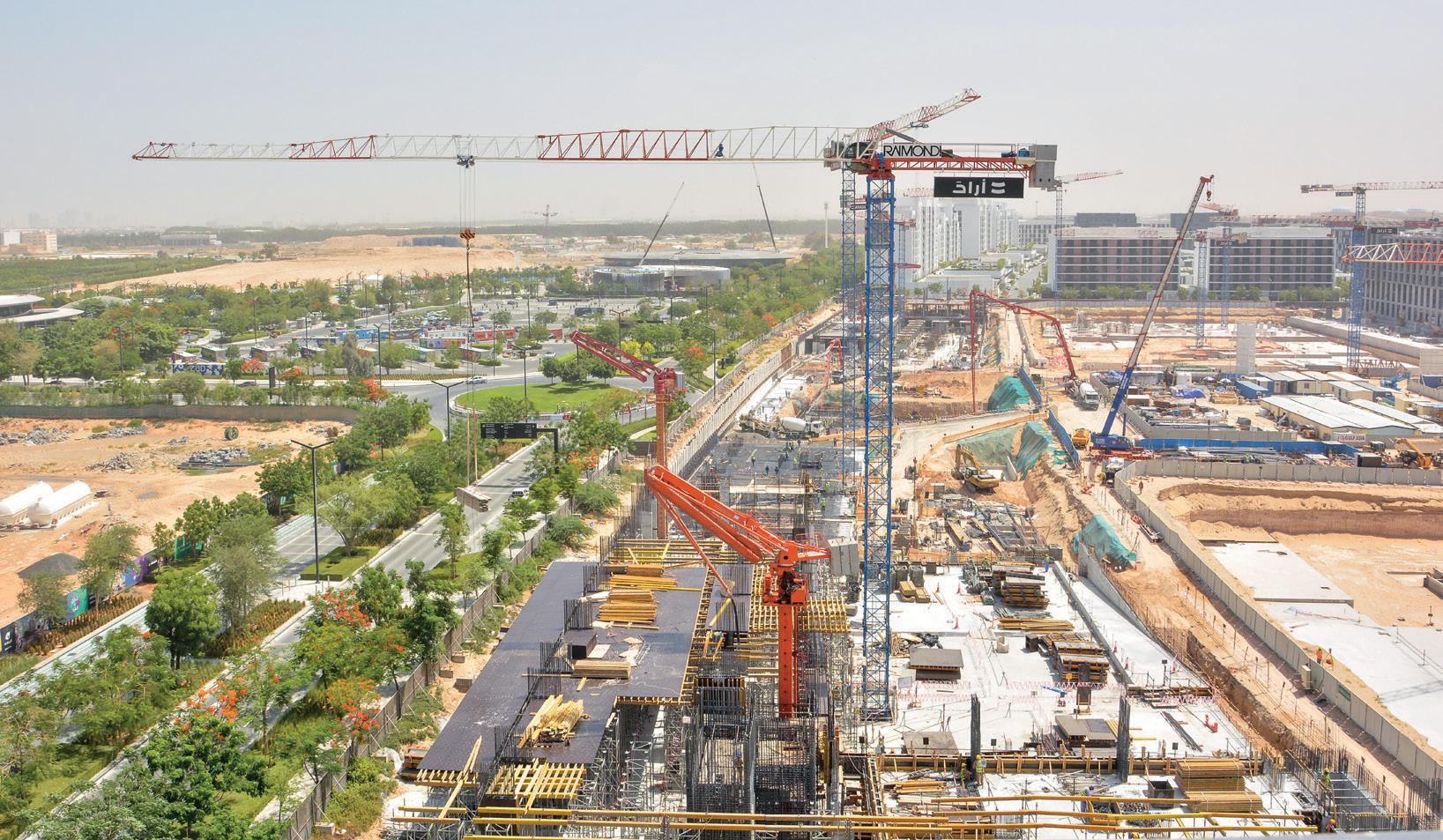
In terms of tower heights, the flat-top cranes are currently operating in freestanding mode, with heights under the hook (HUH) ranging between 36m to 48m. However, Raimondi Middle East has plans to support each crane’s anchoring and climbing procedures as the project progresses. This strategic approach will enable these machines to reach their final heights of 63m and 69m, ensuring they are perfectly positioned for the project’s evolving needs.
As the Vida Residences Aljada complex nears completion, it promises to be a remarkable addition to Sharjah’s landscape. This ambitious project will include a 175-room hotel, 255 branded residences, and 149 serviced apartments. It’s a testament to the dedication, precision, and innovation of the teams involved, with Raimondi Middle East leading the way with their advanced crane technology and expertise.
Meanwhile, Bennetts Cranes is the UK’s exclusive dealer of Raimondi cranes and recently installed three MRT159s and one MRT152 flat-top tower crane for The Green Quarter site in West London – one of London’s most ambitious waterside regeneration developments.

It was also great to see that the contractor for this project has a 10-year-old crane policy, which means that all the machines deployed on-site cannot be any more than 10-years old by the end
of construction,” said Edward Seager, Managing Director, Bennetts Cranes.
Erected between 2022 and 2023, the four flat-tops present similar configurations in terms of tower height and jib length. In fact, two of the three MRT159-8t tower cranes are at work with a jib length of 44m and tower heights of 47.2m and 67.8m. While the remaining MRT159 and the MRT152 are both installed with a radius of 38m and heights of 64.9m and 47.3m.
“The use of flat-top saddle jib cranes in this particular case, where each crane oversails or is oversailed by at least two other machines, has helped to minimise the height difference needed between them. This has boosted the cranes’ productivity in terms of load lifting time compared to an A-frame crane solution,” Seager further explained.
The shorter tower height is also better for the environment and project costs as it reduces the base
loadings, meaning less steel and concrete is needed for the base. Another key feature of Raimondi cranes’ site suitability is the 2.5m boom length sections,” Seager added. “Other cranes typically feature sections of 5m. Smaller sections, such as those developed by Raimondi, allow for more accurate jib configurations – 2 x 44m and 2 x 38m – helping to optimise the use of space and maximise load handling time.”

Irish Cranes & Lifting, deployed four Raimondi MRT234 flat-top tower cranes for the construction of a new mixed-use development in Howth, a suburb of Dublin, Ireland. Claremont, developed by Marlet Property Group, is located along a section of the Irish Rail network, required detailed study of the positioning and operational procedures of each machine. As per Irish Rail requirements, prior to installation, each crane had to be fully insured, obtain specific permits, as well as a license agreement. In addition, once erected, each machine underwent a third-party independent inspection.
“During the installation we had a series of guidelines, including the supporting mobile crane allowed to slew only by 180o. We had to install the cranes in parallel to the tracks to avoid any component, including the counter ballast, oversailing the railway line – a zoning of 3m away from the critical infrastructure was set for the entire site,” Robert Coffey, Director General, Irish Cranes, explained.
Installed between March and April 2023, the MRT234s-12tn are onsite with jib lengths ranging between 44m and 60m, and heights ranging from a minimum of 37.5m to a maximum of 52.8m. All of the cranes, erected at a final configuration, are equipped with a hoist gear of 55kW, and are able to lift at a maximum speed of 120 m/min.
“In terms of technical challenges, to align with the existing regulations, all machines have been derated to 75% of their maximum lifting capacity, and one of the jibs has been shortened to avoid interference with a communications mast on the rail line,“ Coffey continued.
Large ships and heavy machinery are commonplace at the bustling port of Marseille, but even among this maritime grandeur, a recent project involving the Tadano CC 68.1250 1 crane stood out as an extraordinary feat. According to Vernazza Autogru General Director Paolo Delfino, not a single employee at the site had ever encountered such an enormous crane before. This is hardly surprising since the CC 68.1250 1 holds the distinction of being the largest

crane currently in operation in both France and Italy. However, the remarkable crane was not the only exceptional aspect of this project. Set against the backdrop of “Forme 10,” one of the largest dry docks in all of Europe, the Tadano crane played a pivotal role in replacing technical equipment on the Saipem CastorOne, one of the world’s largest pipelaying vessels, stretching an impressive 325 meters in length.
The task at hand was no small endeavour. The crane was tasked with lifting and replacing heavy pipelaying equipment with more powerful and efficient components. This included hoisting a
190-tonne DMA winch to a height of 30 meters with a radius of 30 meters onto the ship, along with six 200-tonne tensioners to a height of 40 meters at a radius of 50 meters. However, the crane’s most formidable challenge was hoisting a colossal 500-tonne pipeline winch, complete with a fivekilometre steel wire rope, to a height of five meters at a radius of 25 meters.
Paolo Delfino explained the critical role of the CC 68.1250 1, stating: “These specifications really make it clear that only an extraordinarily powerful lattice boom crawler crane was going to be able to take care of the huge loads and large work
radii. On top of that, we needed to account for the tight space conditions at the dock even with an installed Superlift system, so that our CC 68.1250 1 was the way to go.”
Delfino highlighted that the crane’s track width almost perfectly matched the rail spacing of the harbour crane at the dock, proving instrumental in manoeuvring the crane on crane mats directly on the rails. Before commencing its vital role in the Marseille project, the CC 68.1250 1 had to make its way from the Italian city of La Spezia to France. This complex journey involved transporting the crane on a 3,000-tonne barge over four days. Once in

Marseille, Vernazza’s dedicated five-person team worked tirelessly to set up the crane, ready for action in less than a week after its maritime voyage.
Configured with an 84m main boom and SSL, complete with the superstructure and superlift counterweights, the CC 68.1250 1 proved itself capable of handling all lifts safely and efficiently. Equipped with a versatile ramshorn hook for both light and heavy loads, the crane was ideally suited to the ambitious project.

Paolo Delfino expressed his satisfaction, stating, “The CC 68.1250 1 was the perfect choice for this ambitious job, and it once again demonstrated
its extraordinary maneuverability and precision.” Remarkably, throughout the approximately fourmonth project, the crane performed flawlessly, without a single technical issue. The Chantier Naval de Marseille shipyard, the client, expressed their extreme satisfaction with the results.
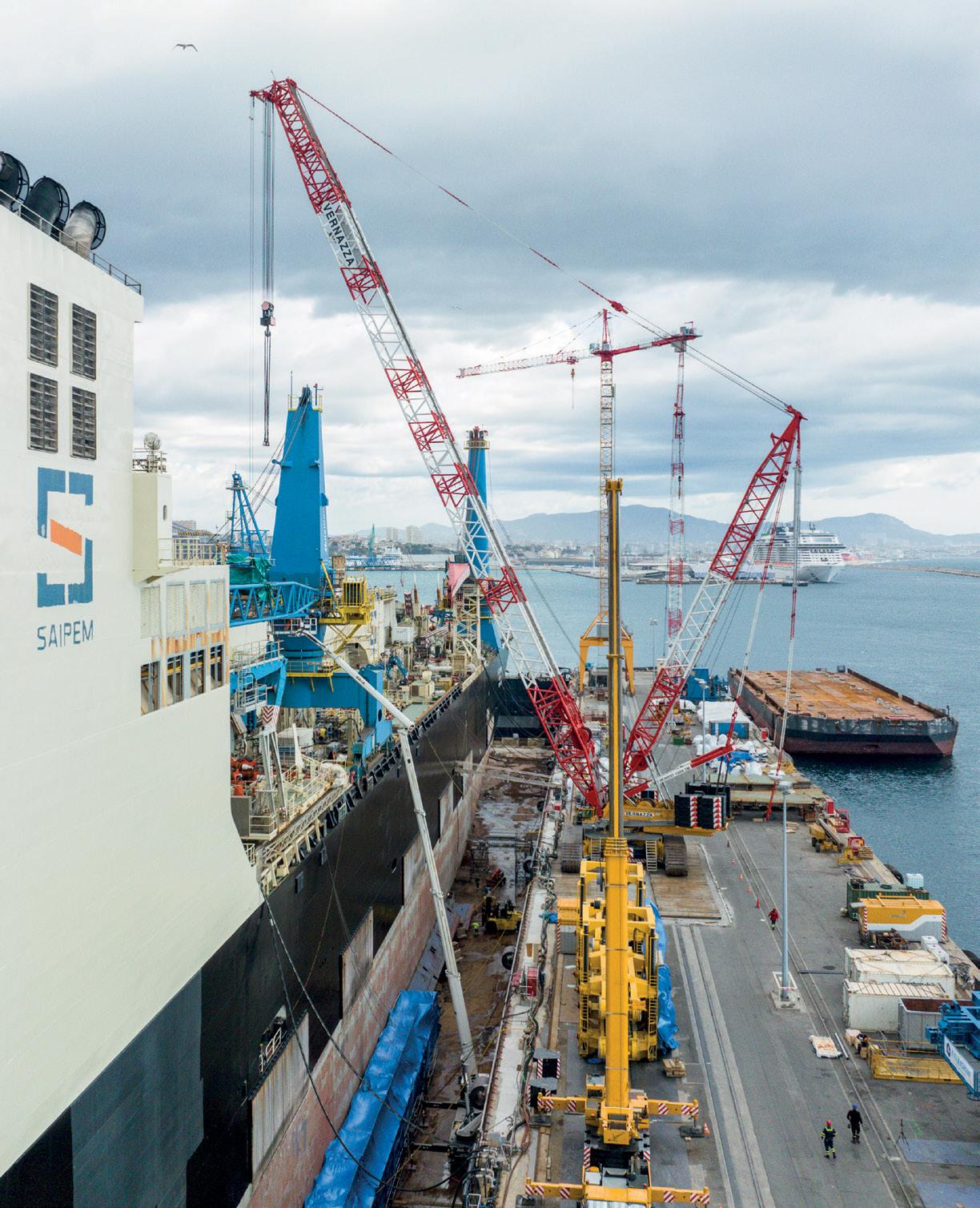


Paolo Delfino concluded by emphasising the priority placed on client satisfaction and commending his team, the Tadano CC 68.1250 1, and their exceptional performance in completing the job to perfection. The project serves as a testament to the capabilities of cutting-edge crane technology and the expertise of those who operate it.

Construction projects often encounter a multitude of challenges, and overcoming them requires creative solutions. The Wadanggari Park project, an ambitious initiative by Lane Cove Council in Sydney, Australia is a shining example of how the right crane solution can simplify even the most complex construction endeavors. In partnership with Aurecon, Marr Contracting, and Arenco, this project is a testament to ingenuity in the face of adversity.
Wadanggari Park, funded in part by the NSW Government’s Public Spaces Legacy Program, is a visionary project that encompasses 4,750 square meters of open green space. It plays a pivotal role in connecting the community to St. Leonards train station, new retail, commercial developments, and residential complexes. Moreover, it provides
pedestrian links to the new Sydney Metro Crows Nest Station, enhancing accessibility and connectivity in the region.
While this over-rail plaza represents a triumph of urban design, it posed an array of construction challenges for the engineers at Aurecon. They were tasked with building a complex structure within extremely confined spaces and under tight deadlines. To tackle this formidable challenge, Aurecon turned to Marr Contracting, a leader in innovative crane solutions.
Describing the site as “congested” is an understatement. It was sandwiched between towering high-rise buildings, one of Australia’s busiest arterial roads, and spanned a major rail corridor on Sydney’s northern train line. The available space for establishing a crane capable of lifting precast elements weighing up to 150 tonnes was a mere seven meters wide. The challenge was

further compounded by the necessity of completing heavy lifting within restricted timeframes due to night road closures and rail possessions.
The task at hand demanded a crane solution that could navigate this complex site efficiently, complete heavy lifting safely, and ensure construction progress within these narrow windows of opportunity. It was not only about lifting but also about the installation and removal of the crane itself, a challenge in its own right.
Collaborating closely with Aurecon over 18 months, Marr Contracting crafted a unique solution centred around their M2480D Heavy Lift Luffer tower crane. This innovative crane provided engineers with the confidence that their design concept could become a reality. The solution became an integral part of the tender package for the project’s construction phase once Arenco was appointed as the Head Contractor.
The installation of the M2480D on a custom compact piled foundation, equipped with a 64-meter
boom, allowed for the perfect combination of heavy lifting capacity and a small footprint, equivalent to two passenger cars parked side by side. With a lifting capacity exceeding 60 tonnes over a 60-meter radius, the M2480D effortlessly managed to install more than 40 precast beams, each weighing up to 80 tonnes.
The focus shifted from how many beams the crane could install during rail possessions to how many beams could be efficiently delivered to the crane’s waiting hook during these windows of opportunity.
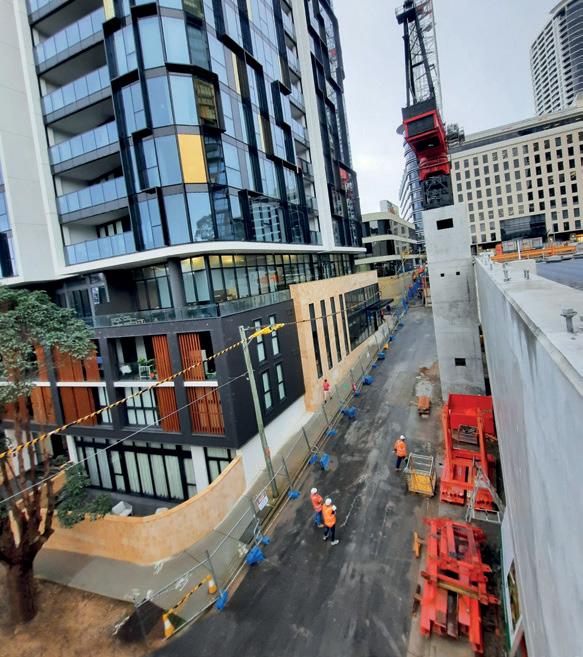



After 18 months of meticulous planning and innovative problem-solving, the result was a safe, efficient solution to what initially appeared to be an incredibly complicated task. Arenco successfully erected the girders, skillfully navigating through complex road closures and inflexible rail possessions.

This innovative crane solution has not only proven effective for the Wadanggari Park project but has also opened doors to alternative approaches for constructing structures and projects that were once deemed inaccessible to traditional construction methods. The anticipated completion of Wadanggari Park is set for mid2023, marking the realization of a transformative vision. This project stands as a testament to the power of collaboration, innovation, and expertise in the construction industry, proving that when the right crane solution is employed, even the most complex challenges can be overcome.
A
Paul Fitzgerald, Senior Project Manager at Aurecon, shared his insights on the project, stating, “Due to the size and weight of the PCSTG, and the lift radius
required for installation, it couldn’t be just ANY tower crane. The heavy lifting capacity of Marr’s M2480D tower crane provided an extremely efficient craneage solution that maximized the available time for construction works during the rail corridor shutdowns and ultimately delivered program benefits throughout the duration of the project.”
Zani Buzevski, Construction Manager at Arenco (NSW), also commended Marr’s team, stating, “Numerous rescheduling requirements, due to the inclement weather and all sorts of other humps imposed, were successfully sorted out thanks to Marr’s team and their professional approach throughout the process.” Marr Contracting’s innovative crane solution not only solved construction challenges but also ensured smooth project execution.

The M2480D was used to lift more than 40 precast beams, each weighing up to 80 tonnes
40




34 TOP
Ten tips that reduce risks for everyone.


Installing the world’s biggest offshore wind farm.

THE V7 WHEEL LOADER IS EXPECTED TO BE FORMALLY LAUNCHED AFTER SEPTEMBER 2023 AND FEATURES A NEW ARTICULATION/OSCILLATION JOINT.
Yanmar Compact Equipment EMEA (Yanmar) is using the upcoming Matexpo 2023 in the Netherlands, to showcase the V7 wheel loader which features a new articulation/oscillation joint that keeps the machine’s total height under 2.5m. According to the worksite specialist it is perfect for easy transportation and is some half a tonne lighter than the next largest machines in the Yanmar range.
Yanmar’s zero tail swing excavators at the show, include the ViO27-6 (2,770 kg OW). Exceptional performance and stability are what mark the unit as special, due to features such as its highly advanced engine – producing 15.8 kW of power at 2,500 rpm, excellent weight distribution and true zero tail status.
The ultra-compact ViO38-6 (3,695 kg OW) will also make an appearance, with a swivel radius of just 2,875 mm and a tight turning radius. Completing the zero tail trio is the efficient and powerful ViO57-6B (5,505 kg OW), with an advanced 28.3kW TNV 4TNV86CT-PBV engine – making this a unit that meets EU Stage V emission requirements.
Yanmar’s will also display its conventional tail swing excavators, including the urban and landscaping-ready SV26 (2,740kg OW which combines the largest cabin in its class with a compact 1,550mm width.
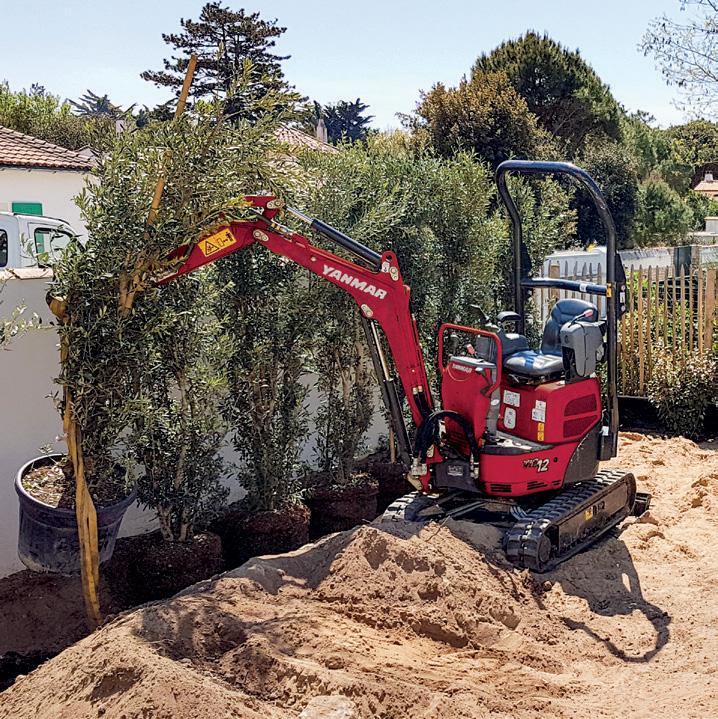
CATERPILLAR’S CUTTING-EDGE 988 GC WHEEL LOADER IS CLAIMED TO BE SETTING A NEW STANDARD IN HEAVY EQUIPMENT TECHNOLOGY.
Caterpillar has introduced the eagerly awaited 988 GC wheel loader, the latest marvel in its ever-evolving lineup of heavy machinery. This release marks a significant milestone in the world of construction equipment, as Caterpillar continues to push the boundaries of innovation, delivering superior performance, unmatched efficiency, and operator-centric features.
At the heart of the 988 GC wheel loader is a formidable powertrain, designed to tackle the toughest tasks with ease. The machine boasts a robust engine that combines raw power with fuel efficiency, ensuring exceptional performance while maintaining a commitment to sustainability. This balance is achieved through Caterpillar’s cutting-edge engineering and adherence to strict emissions standards.
productivity. Whether lifting heavy loads, handling materials, or performing precise digging operations, the 988 GC delivers consistent and reliable performance. Inside the spacious and ergonomically designed cab of the 988 GC, operators are greeted with a host of features designed to enhance their work experience. These include air-conditioning, adjustable seating, and reduced noise and vibration levels, ensuring operators can focus on their tasks without distraction.
The cab is equipped with state-of-theart technology, including a user-friendly control interface and advanced visibility aids such as cameras and sensors. This not only makes operating the 988 GC a breeze but also enhances job site safety. Efficiency and sustainability are at the core of Caterpillar’s design philosophy.

449HP
The loader’s hydraulic system has been optimized for precise control, offering operators unmatched versatility and
The 988 GC features advanced technologies aimed at reducing fuel consumption and emissions. This not only lowers operating costs but also contributes to a greener and more environmentally responsible construction industry. In addition, the loader’s maintenance routines are simplified through features like quick access to service points and electronically assisted maintenance tracking. This ensures minimal downtime and maximum productivity on the job site.
The 988 GC wheel loader is also highly adaptable and customisable.
VOLVO’S UPGRADED WHEEL LOADER SERIES PROMISES IMPROVED COMFORT, EFFICIENCY, AND CUSTOMISATION.

In a significant development for the construction equipment industry, Volvo is rolling out upgrades for its L60F-L90F wheel loaders, ushering in the H-Series generation with Tier 3 engines. These enhancements not only maintain the machines’ renowned power and reliability but also introduce a host of additional benefits. The H-Series wheel loaders promise increased operator comfort, lifting capacity, fuel efficiency, and reduced service costs, resulting in a smoother operator experience on virtually any job site.
As part of this series upgrade, the older L60Gz and L90Gz models will be gradually phased out by the close of 2023. The H-Series wheel loaders offer a fresh look and feel, accompanied by a suite of performance-enhancing upgrades that can be further customized with a wide range of optional equipment. The improvements extend beyond the mechanics of the machines and directly impact the operator experience. Inside the cab, operators can look forward to a significantly more comfortable and productive work environment. Among
the standout features is Rimpull Control, which empowers operators to fine-tune the wheel loaders’ rimpull to match slippery ground conditions. This helps reduce wheel spin and wear and tear, ultimately leading to improved fuel efficiency.
The H-Series introduces Smart Control, a system that optimizes the energy distribution between the hydraulic and drive train systems, delivering precisely the right amount of power where and when it’s needed.
Furthermore, these upgraded wheel loaders come equipped with an electrically opened engine hood, slide-out coolers, and quick oil change connectors. These features not only provide better access to service points but also simplify maintenance routines, making them more convenient and hassle-free.
Volvo’s commitment to fuel efficiency shines through in the H-Series. An optional lock-up torque converter enhances productivity and fuel efficiency, particularly in load and carry applications. It also contributes to reduced operator fatigue, boosting overall site productivity.
Another noteworthy fuel-saving feature is the Eco pedal. This innovation provides operators with a tactile response when they reach the optimal engine rpm range, indicating the most economical working
range. Operators can choose to stay within this range for peak fuel efficiency or go beyond it when necessary.
These enhancements collectively empower operators to work smarter, not harder, while ensuring maximum uptime for improved site productivity and enhanced fuel efficiency.
Volvo recognises that every customer’s needs are unique. To further enhance uptime and performance, customers can select from a range of Volvo Services, including On-Board Weighing and Volvo Co-Pilot. These services enable the H-Series wheel loaders to operate with precision, productivity, and safety.
The upgraded wheel loaders offer extensive customization options, with a complete range of choices for attachments and features, allowing them to be tailored precisely to meet the diverse demands of customers across various industries.
SPECIFICATIONS
L90H (ENGINE VOLVO D6J)
Static tipping load: 9.7t
Bucket capacity: 2.1-7m³
Log grapples: 1.3-2.4 m²
Operating weight: 14.5-17.3t
Breakout force: 137.7kN



TWICE THE TOOLS DOESN’T HAVE
DOUBLE THE TROUBLE. HERE ARE 10
TIPS FOR USING BACKHOES ON SITE
Always wear the seat belt when operating the backhoe, and ensure it’s properly fastened to prevent ejection in case of a rollover or collision.

CLEAR LINES OF COMMUNICATION
Establish clear communication protocols with ground workers, spotters, and other operators on the job site. Use hand signals, two-way radios, or other effective methods.

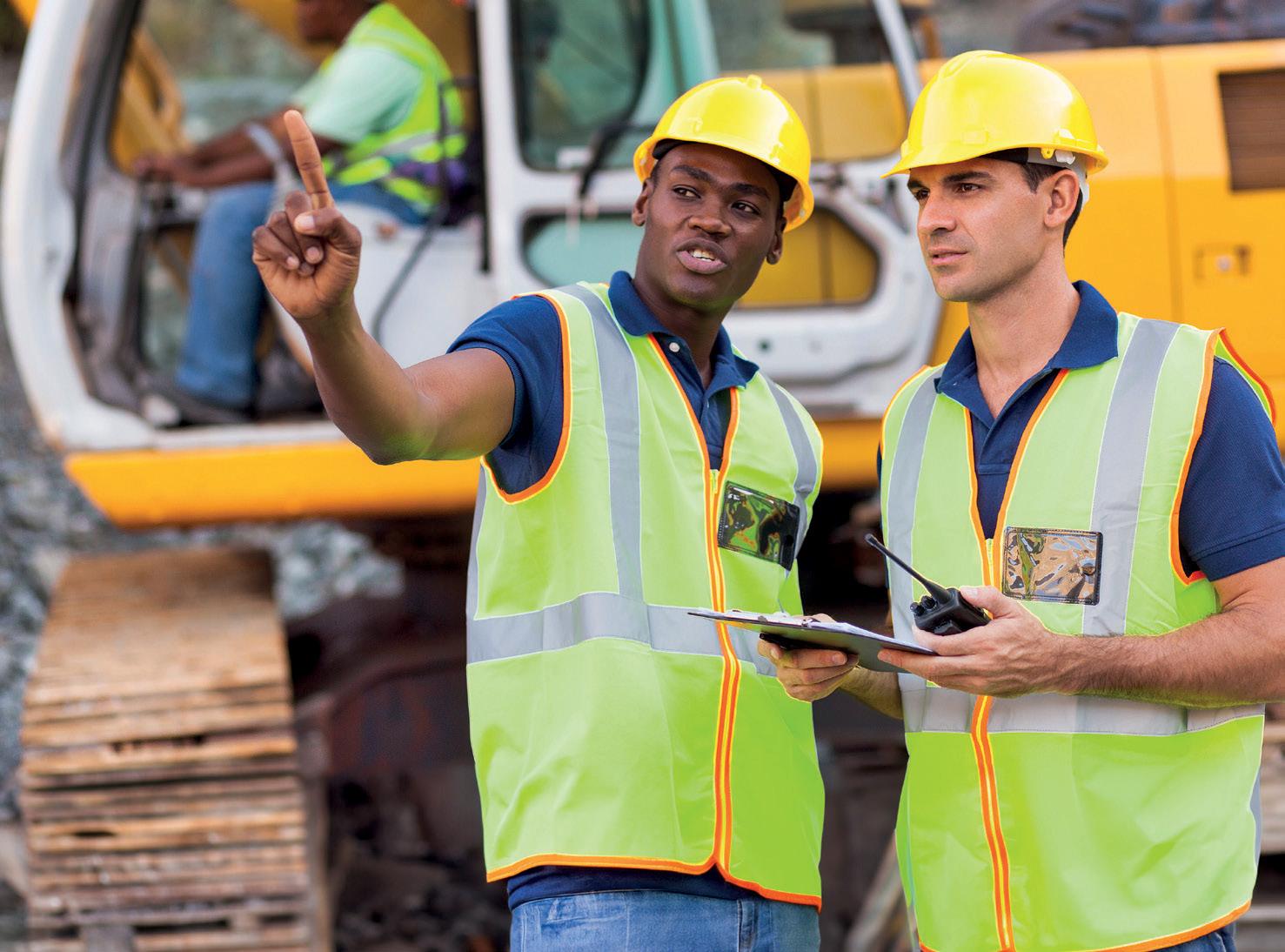
AVOID DIGGING DRAMA
When digging, ensure the bucket or attachment is level and properly secured. Avoid overloading the bucket, which can lead to instability.

Maintain a safe distance from other workers, equipment, and obstacles to prevent accidents and collisions. Use mirrors and rearview cameras if available.
STAY ON STABLE GROUND
Operate the backhoe on stable, level ground to minimize the risk of tipping over. Avoid working on slopes or unstable terrain whenever possible.
KEEP AN EYE ON YOUR OVERHEADS
Be aware of overhead power lines, structures, and other potential hazards when raising the backhoe boom or moving the equipment.
SHUT IT DOWN SAFELY
When finishing work, lower the bucket or attachment to the ground, engage the parking brake, and turn off the engine before exiting the cab. Store the backhoe in a secure location.

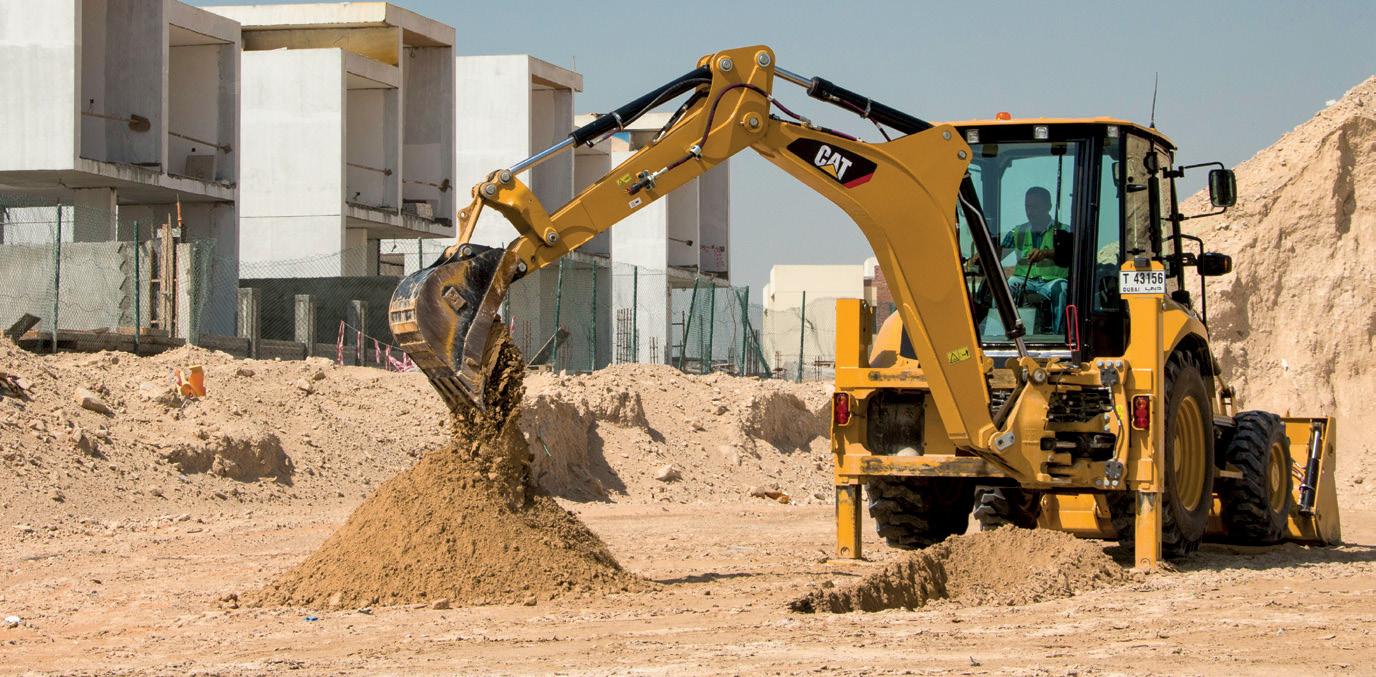


JAMIE FOX, PRINCIPAL ANALYST AT INTERACT ANALYSIS, LOOKS AT HOW OFF-HIGHWAY POWERTRAIN ELECTRIFICATION IS DIFFERING FROM THE ON-ROAD ADVANCES

Having written multiple reports on both off-road and onroad powertrains, I’m now, as we launch our latest OffHighway Powertrain report, in a good position to reflect on the differences. On a very broad level there are many similarities.
For example, over time the market will steadily replace diesel with alternative powertrains, the trend in new technologies is not towards hybrid vehicles in either off-road or on-road, and charging/refuelling infrastructure remains a significant problem that is difficult to solve. Similar competitors, such as Dana, Bosch and Ballard, operate in both markets, and nickel manganese cobalt (NMC) and lithium-ion phosphate (LFP) batteries are dominant in both areas.
However, dig a little deeper and you will see some significant differences between off-road and on-road powertrains that component suppliers, OEMs, and others need to be aware of.
If you have a product that can be used in a medium-duty truck, it isn’t difficult to adapt it (or create a new product) for a heavy-duty truck. The powertrain of a distribution truck is very similar to a long-haul truck of a given size. If necessary, you could use exactly the same or a very similar powertrain for both purposes. Intercity buses/ coaches are a different design to urban buses, but not dramatically different, and the basic powertrain design and chosen components can be similar.

Off-road, with about 6 million vehicles sold in 2022, is similar to the market sizes of trucks and buses (if we include pickup trucks and vans, then trucks is much bigger), but the diversity is much greater. The off-road sector covers tractors, wheel loaders, backhoe loaders, skidsteer/crawler loaders, bulldozers, aerial work platforms, tractors, combines, telehandlers, hauler-dump trucks and others, each with very different usage requirements and powertrain designs. None of the powertrain components used in a small, hand-operated forklift could be reused in a large excavator.
It certainly isn’t one product fits all. Targeting the off-road market will likely mean finding your niche. A broader strategy requires a variety of different products and working closely with customers on designs. This will take time, energy and money.

Off-road environments include mines, construction sites and farms which tend to have a lot more dust, dirt and other material in the air. Environments can sometimes be noisy, terrain is less smooth and the range of speed and acceleration requirements can be higher. All this has to be factored into the design of a powertrain and selection of components. Sometimes, this will mean little change to an existing on-road product, or simply a protective cover. More
“The trend in new technologies is not towards hybrid vehicles in either offroad or on-road, and charging/ refuelling infrastructure remains a significant problem that is difficult to solve”
often, a completely different design or even fully customized products may be required.
Dust and dirt are a particular concern for fuel cell systems, which makes their adoption a little more challenging. While the fuel cell does not need to be fundamentally different, it needs better protection from the environment than on-road and more regular changing of filters. JCB has said that fuel cells may not be up to the task for off-road, however further testing from a variety of manufacturers is needed in our view.
It would be strange to visit a truck or bus trade show and find few electric vehicles on display, little discussion on the topic of electrification or low interest in it, but at the ConExpo construction exhibition in March 2023 in Las Vegas for example, very few new electric vehicles were announced.


However, the slow pace of electrification does not mean that suppliers should avoid this market. The volume will come later and it tends to be won by those that invest early. The time to invest in new products or substantially expand existing offerings will vary by company need, existing technology, target region and segment. In practice 2023 or 2024 will be a good time to invest in many cases so that a company’s product availability and customer relationships are able to meet demand and stay ahead of competitors in the middle and second half of the decade.
To clarify, forklifts were already 64% electric in 2022 (including a small amount with fuel cells), scissor lifts were at 89% and boom lifts at 25%. Largely due to these categories, 1.5 million (or 27%) of off-highway vehicles/ machines covered by this report were already electric in 2022. However, if we exclude these categories, fully electric vehicles in 2022 did not even reach 0.1%, with 2027’s percentage forecast to be just under 1% and around 5% by 2030. This is a much slower pace than electrification in the truck and bus market.
Battery packs in off-highway are 41% more expensive per kWh in off-road than on-road medium and heavy-duty trucks and buses.
The graph below compares on-road (trucks of 6 tonnes+ and buses) and off-road (all the categories included in our research except forklift, scissors and boom). The 3% market penetration of onroad electrification in 2021 is forecast to be reached in 2029 in off-road.
Off-road components are more expensive
Gathering prices for both off-road and onroad has helped me refine the data by crosschecking them against each other, with significant differences in prices between the sectors in many cases making perfect sense.
Unlike the truck market, you cannot produce one motor and then use the same or similar in many different types of off-highway equipment due to the vastly different duty cycles and power and torque requirements, as well as very different sizes of machine. This, combined with the lower volumes in off-highway, means motors and inverters are on average 46% more expensive in off-road per kW, according to the data in our reports.
Our research has also indicated that battery packs in off-highway are 41% more expensive per kWh in off-road than on-road (medium and heavy-duty trucks and buses). For light-duty vehicles, the difference is even larger. Cell cost remains similar but packaging requires more work due to differences in level of robustness, space and reliability. The same modules cannot be reused in more cases.
This varies substantially by application. Forklifts, which can in some cases use lead acid batteries, and have higher volume and commoditization than most off-road vehicles, have an even lower battery price than trucks. In an extreme case, say a very large specialized machine for mining where only 5 or 10 electric units might be produced, the battery pack price per kWh could be more than double the onroad case.
Almost all of the extra cost in an off-road electrified powertrain comes from the battery pack. Fuel cell costs are only slightly higher (due to volume), onboard chargers are only slightly higher as well. DC-DC converters are often less expensive in off-highway, due to the smaller voltage range.
It is rare to see a company specializing only on off-road. Most companies focus on both, or only on-road (for now). For on-road in recent years, we are beginning to hear comments such as “red ocean”, “bloodbath”, “20 companies bidding on the same quote”.
anticipating it, with passion and foresight, is
Battery packs in offhighway are up to 41% more expensive per kWh in off-road than on-road
In off-road, battery pack has a smaller share of the total powertrain revenue In 2022, the battery pack accounted for more than half the on-road dollars. It is only 38% in off-road. Based on this empirical evidence, we think the reason in some cases could be the need for higher peak power (meaning more expensive motors and inverters) and a lack of range anxiety (in offroad you are very often near your company site so there is less margin for error required in the battery pack).
In off-road, this is less common. If anything, there seems a clear need for more suppliers to enter the market to help drive innovation and price reductions.
BEV has not yet won off-road (hydrogen has an opportunity)
For most trucks and buses (at least within urban environments rather than long distance), BEV is clearly already winning the battle for the future. But off-road there are situations that are fundamentally
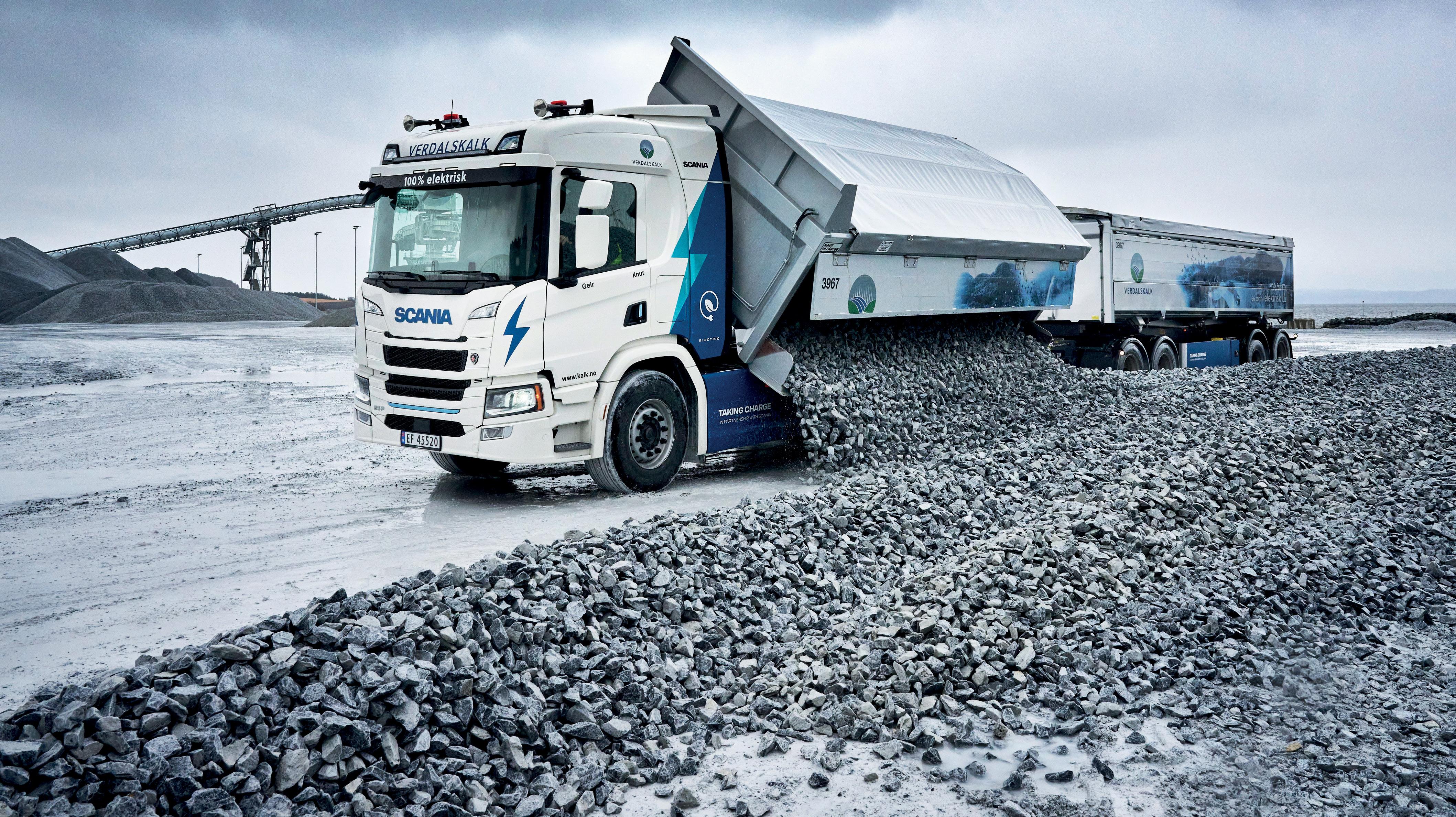
difficult to do with BEV (such as extremely heavy machines, or those operated for 15+ hours a day). Hydrogen vehicles, both fuel cells and ICE, in theory have more of an opportunity to find niches. That being said, we currently forecast more hydrogen vehicles to be sold in trucks than off-road because of where manufacturers are focusing at the moment. And we also forecast a lot more BEV than hydrogen off-road. But it´s not a done deal. There is a lot to play for.
E-axles are not really a trend off-road E-axles are talked about a lot in on-road. It´s been a hot topic for a couple of years at least. But in off-road, this is not what manufactures are focused on. This is likely due to the different shape and therefore required architecture of off-highway vehicles. Less need for aerodynamic shapes may also be a factor in how components are packaged. On-road, permanent magnet motors dominate with a little over 90% of the units and revenue. But off-road, our data shows that induction and synchronous reluctance have a role to play with a much larger share. To summarize, off-road is a harsher, more diverse environment with slower electrification, while on-road has higher volume, more suppliers and lower prices. Both markets offer good opportunities for suppliers.
“A broader strategy requires a variety of different products and working closely with customers on designs. This will take time, energy and money”Source: Interact Analysis
The jack-up vessel Voltaire is said to be in position to install the first offshore wind turbine at the Dogger Bank Wind Farm. The move signals the start of construction of the sustainable power project, which is expected to feature a total of 277 turbines on completion.

The Voltaire is billed as the largest vessel of its kind in the world, with a lifting capacity of 3,200t. It has been commissioned to operate on all phases of Dogger Bank, installing GE Renewable Energy’s 13MW Haliade-X turbines approximately 128km from the UK’s Yorkshire coast, a report noted.
the project, with Equinor responsible for the farm’s operation over its anticipated 35-year operational lifespan.
The project is expected to generate over 2,000 job opportunities, primarily in the North East of England.
The challenging conditions in the North Sea have led to the introduction of a number of firsts for the project, including the use of an unmanned offshore High Voltage Direct Current (HVDC) substation platform.


3,200T
Once complete in 2026, Dogger Bank (phases A, B and C) will be the world’s largest offshore wind farm, with an installed capacity of 3.6GW. The turbines will occupy an area close to the size of Greater London, which is said to make Dogger Bank more than twice the size of the next largest offshore wind farm. The project will provide electricity for up to six million homes.
The project is a collaboration between UKbased developer SSE Renewables and Equinor and Vårgrønn, joint venture partners from Norway. According to the report, SSE Renewables will oversee the development and construction of
SSE’s CEO, Alistair Phillips-Davies said, “Dogger Bank is one of the biggest and most complex engineering and infrastructure projects anywhere in the world.
Our progress here with our JV partners Equinor and Vårgrønn proves that offshore wind projects of this size are now mainstream and will help turbocharge the transition to the cheaper, cleaner and more secure energy system we all want to see.”
“It is action, not ambition, that will secure our energy future and this project shows action on a massive scale. But we will need many more Dogger Banks to achieve our goals and we look forward to working with government to bring forward more projects at pace,” he added.
Total lifting capacity of the Voltaire vessel
JCB have used their experience in designing tough, hardworking equipment to ensure their electric scissors range are also built to higher standards. With high quality paint finish and many unique features, the machines have higher levels of safety, ease of use, reliability and serviceability. Industry standard components across the range allow seamless integration into existing rental fleets. JCB also offer higher levels of support through an unrivalled dealer network with quick start guides, good parts availability, finance and technical advice.
For more information, please contact your local dealer.
www.jcb.com/access-platforms
